#Richard Gitlin
Explore tagged Tumblr posts
Text
Post Modern Art
Escaping Confines of Museum

City, Michael Heizer. Located in Garden Valley, a desert valley in rural Lincoln County in the U.S. state of Nevada. land art sculpture. 1970-2022
Collapsing Boundaries Between High and Low

Curious Kitten watercolor painting is a painting by Svetlana Novikova which was uploaded on February 23rd, 2013.
Rejecting Originality

Andy Warhol 1928–1987. Silkscreen ink and acrylic paint on 2 canvases. 1982
Jouissance
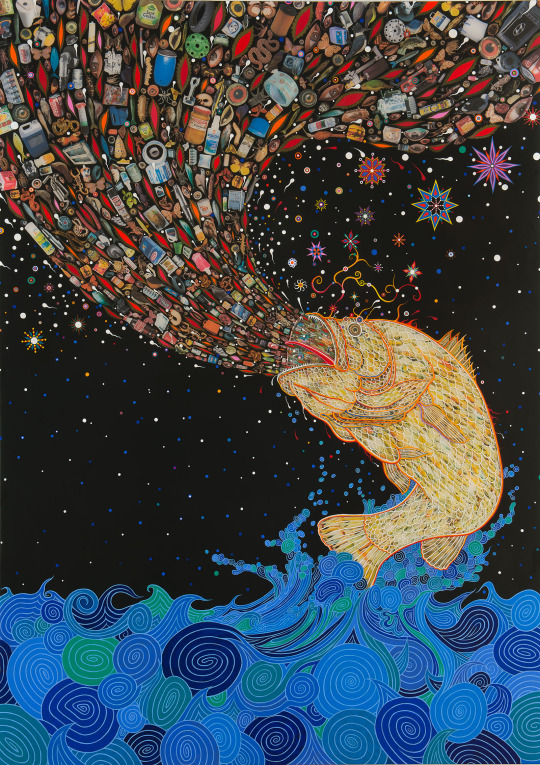
Fred Tomaselli, 2014, 60″ x 84″, photo-collage, leaves, acrylic and resin on wood panel, © 2014, courtesy of James Cohan Gallery and the artist
Working Collaboratively

Meow Wolf. Sept. 13, 2021.
Adam Christopher
Andi Todaro
Ashley Frazier, Michael Sperandeo
Brandan Styles "Bzurk”, Ellie Rusinova
Brian Corrigan
Cal Duran, David Ocelotl Garcia
Cami Galofre
Chris Bagley
Christopher Owen Nelson
Christopher Short
Collin Parson
Corrina Espinosa
Dan Taro
David Farquharson
Dice 51
Douglas A. Schenck “DAS”
Dylan Gebbia-Richards
Frankie Toan
Ian McKenna
Jaime Molina, Pedro Barrios
Jennifer Pettus
Jess Webb
Jodi Stuart, Libby Barbee
Joseph Lamar
Joshua Goss
JUHB.
Justin Camilli
Justin Gitlin aka Cacheflowe
Kalyn Heffernan, Gregg Ziemba
Katy Zimmerman, Erika Wurth
Kia Neill
Kristin Stransky
Laaiaim Mayer
Lauri Lynnxe Murphy
LORDSCIENCE UNIVERSAL
Lumonics
Marjorie Lair, Kyle Vincent Singer
Maya Linke
Myah Sarles
Nicole Banowetz
Nolan Tredway
Ramón Bonilla
Reed Fox, Ben Weirich
Sabin Aell, Randy Rushton
Scott Hildebrandt
Sean Peuquet
Shayna Cohn
Sigrid Sarda
Sofie Birkin
Thomas Scharfenberg
Viviane Le Courtois
Wanderweird
Wynn Earl Buzzell Jr.
Andrew Novick, Pamela Webb, Robert Ayala
bearwarp
Chad Colby, Lexis Loeb, Hayley Kirkman
Charles Kern, Ty Holter, Ben Jackson, Rachel Bilys, Brett Sasine
Demiurge LLC: Joe Riche and Wynn Buzzell
Eriko Tsogo, Jennifer Tsogo, Tsogo Mijid, Batochir Batkhishig
F. Ria Khan, Armon Naein, Blake Gambel, Calvin Logan, Charles Candon, Harrison Bolin, Luke Collier, Maria Deslis, Sky Johnson, Sofia Rubio-Topete
Ladies Fancywork Society
Merhia Wiese, Annabelle Wiese, Maggie Wiese, Eunseo Zoey Kim, Dan Griner
Mike Lustig, Mitch Hoffman, Tim Omspach, Nathan Koral, Evan Beloni, Ryan Elmendorf, Scott Wilson, Charlis Robbins
Molina Speaks, Stevon Lucero, DJ Icewater, Felix "Fast4ward" Ayodele, Diles, Emily Swank
Oren Lomena, Alaine "Skeena" Rodriguez, Alius Hu
Peniel Apantenco, Kim Shively, Colin Richard Ferguson Ward, (In memoriam)
Sam Caudill, Sean Louis Rove, Juancristobal Hernández
Secret Love Collective: Katy Batsel, Lares Feliciano, Colby Graham, Piper Rose, Frankie Toan, Katy Zimmerman, Lauren Zwicky, Genevieve Waller
The Church of Many: Andrea Thurber, Elsa Carenbauer, Anna Goss, Maddi Waneka and Emily Merlin
Waffle Cone Club: Kyle Vincent Singer, Scott Kreider, Marjorie Lair
Everything is Terrible!
Kevin Bourland
Michael Lujan
Moment Factory
Nina Mastrangelo
Scott Geary, Wayne Geary, Gary Ashkin
Appropriating

Paneel "Rehearsal for an Icon 2001 - Mona Lisa" von Olbinski, Grafikdruck. Digital Print
Hybridizing
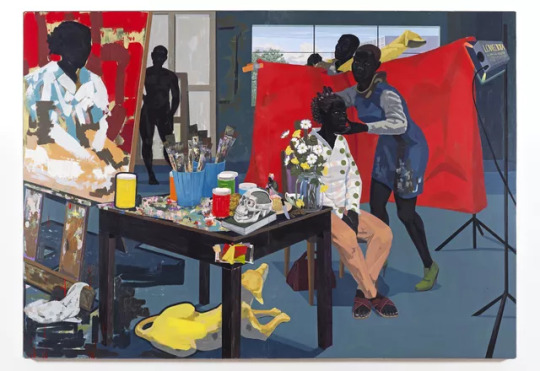
Untitled (Studio)2014
Kerry James Marshall
Simulating

Andy Warhol (American, 1928–1987) 1962. Synthetic polymer paint on thirty-two canvases, Each canvas 20 x 16" (50.8 x 40.6 cm). Overall installation with 3" between each panel is 97" high x 163" wide
Mixing Media
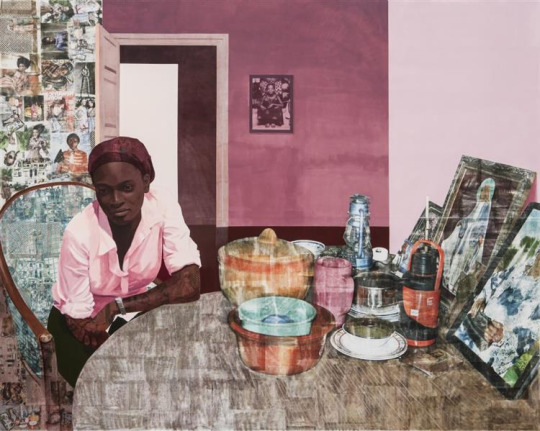
Mama, Mummy and Mamma (Predecessors #2)
Njideka Akunyili Crosby. 2014
Layering

Zephyrus Rising, 2022. Acrylic on Acrylic. 32 × 16 × 22 in Duncan McDaniel
Mixing Codes
Recontextualizing

Leonardo da Vinci’s Mona Lisa, 1503-6; On Winnie: Denis Colomb stoles (worn as a headdress, top and sleeves)
Confronting the Gaze

Harley Quinn in Suicide Squad David Ayer 2016 (left), Harley Quinn in Birds of Prey Cathy Yann 2021 (right)
Facing Abject

Jane Alexander, Butcher Boys, 1985/86, mixed media (Iziko South African National Gallery, Cape Town, photo: Goggins World, CC BY-NC-ND 2.0)
Constructing Identities
Creating Metaphors

Martin Puryear. Ladder for Booker T. Washington, detail, 1996. Installation view at the Modern Art Museum of Fort Worth, Texas. 2003
Using Narratives

Damien Hirst The Physical Impossibility of Death in the Mind of Someone Living, 2013 Lentikulardruck80 x 120 cm
Irony, Parody, Parody Dissonance
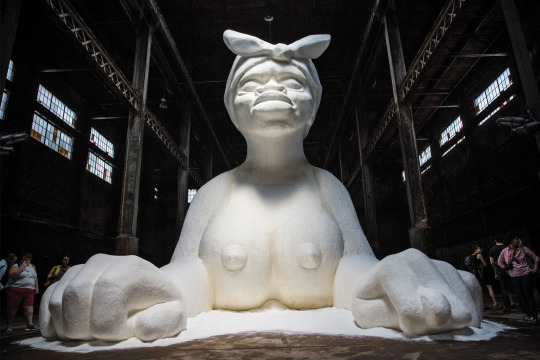
A Subtlety, or the Marvelous Sugar Baby (2014). Kara Walker Photo: Andrew Burton/Getty Images
17 notes
·
View notes
Link
Excerpt from this story from Smithsonian:
Dousing just one of a wind turbine’s three blades in black paint dramatically reduced the number of birds the turbines killed in a multi-year study conducted in Norway, report Heather Richards and David Ferris for E&E News.
The study, published last month in the journal Ecology & Evolution, found that the turbines with one black blade killed 71.9 percent fewer birds than standard turbines on the same wind farm in the Norwegian archipelago of Smøla.
Jonathan M. Gitlin of Ars Technica reports that though wind turbines are an important part of many plans to generate renewable energy, some research has shown they can pose a danger to flying wildlife like birds and bats. The United States Fish and Wildlife Service estimated that roughly 300,000 birds were killed by wind turbines in 2015. Another study estimated wind power killed some half a million birds and more than 800,000 bats died in collisions with wind turbines each year.
Writing for BBC’s Future Planet, Brianne Hogan points out that these figures remain far lower than the total killed by powerlines in the U.S., which a 2014 paper estimated may be between 12 and 64 million. House cats, meanwhile, exterminate an estimated 1.3 to 4 billion birds annually.
Still, the potential of wind power to damage ecosystems by killing or disturbing wildlife has been a concern voiced by both environmentalists and those who more broadly oppose renewable energy. From the wind turbine's point of view, whacking birds to death can also damage the blades, which can be time consuming and expensive to repair, reports Alexandru Micu for ZME Science.
In the following three years, just six birds were killed by the painted turbines, compared to the 18 killed by four nearby unpainted turbines, per Ars Technica. Speaking with E&E News, the researchers say the black blades may allow birds to visually recognize the spinning turbine as an obstacle by creating a “motion smear” that allows them to avoid the dangerous blades.
128 notes
·
View notes
Text
种族与美国的社会运动版图(修订发言稿)
这是7月4日在湾区文化沙龙做的分享的修订文字版本,在保留原意的前提下调整了口语化的表达,因为没有影像,所以还新加了一些讲座中没有的图片。澎湃版本为:https://www.thepaper.cn/newsDetail_forward_8175114 因本人疏忽澎湃版本为最后第二稿而非本博客版本,但除漏了两个参考文献外,两者内部差别不大不影响阅读。
今天分享的题目是种族与美国的社会运动版图,主要包括三部分内容。第一部分主要涉及为什么特定的社会抗争和国家暴力的历史被淡化甚至抹除,以及民权运动衰落后黑人权力运动对民权运动意识形态的挑战和超越。其次会梳理美国左翼运动中的种族问题,移民所激化的种族与阶级矛盾如何在过去一百多年不断撕裂美国的激进主义传统。最后我会分享针对这一波BLM的公众舆论和运动的三个主要特征,然后从这些特征里我们也可以瞥见历史上黑人运动的遗产。
社会运动与黑人解放的公众记忆
今天人们谈论社会运动的时候,他们不仅仅在谈论运动本身,而更是在塑造一种历史视角,一种事后理解和记忆运动的方式。所有的社会运动都同时是被传媒体系和学术研究过滤的,过滤过的事实会被印刻成历史成为一种公众记忆和政治论证的文本被不断唤起。
比如1960年代中期出现的黑人权力运动,直到现在都没有很多影像记录和学术研究。唯一较为完整的纪录片是瑞典电视台记者拍的The Black Power MixTape, 记录了1967到1975年间和黑人权力运动相关的一些零碎的影像,十年前整理成片在美国上映,但因为有很多素材遗漏,一些年份甚至完全没有素材,所以整个视角不是很全面。但60,70年代没有一家美国媒体愿意去深入采访黑人权力运动,所以连纪录片都是外国人完成的。而且当时瑞典的拍摄团队还受到了多方阻拦,被美国政府和媒体机构批评传播负能量,看不到美国社会进步的一面。
美国社会对社会运动的记忆僵化而存在极强的种族偏见。首先社会运动历史有很强的白人中心主义。大量研究都聚焦在白人主导的运动,比如新左派运动。同理,有中文翻译版的书籍也基本都局限在新左派运动。还有大量研究是关���民权运动期间的一些运动,比如静坐抗议Sit-in如何影响南方白人的态度。这个不言自明的假设在于黑人运动的成功要由白人来定夺。此外,白人男性也主导着历史叙事。新左派的回忆和论述被白人核心参与者所垄断。社会运动研究作为一个跨社会学、政治学的子学科,内部的种族和性别分化也极为严重。且不说理论研究三大家蒂利、塔罗和麦克亚当都是白人男性,几乎没有有色人种女性活跃在这个领域,她们一旦从事类似的研究,也会被学界的本质主义思维看作仅仅是研究种族、女性,而不是研究广义社会运动的学者。一般的社运研究者,也绝少有自己亲身参与运动组织工作的,研究和社运实践间常有巨大的脱节。
前面这两个因素当然也受制于一个重要的结构性问题,即社会运动历史档案上的偏见。白人运动和比较温和的黑人运动参与者的记录更完备。Doug McAdam有本代表作叫《自由之夏》,这本书讲述参与1964年自由之夏项目对志愿者人生的长期影响,他们参与以后怎么开始思考改变社会,在今后的人生中更多参与政治。但麦克亚当之所以可以写这本对社运研究几乎是奠基性的书,正是因为自由之夏九成志愿者都是白人,然后档案资料非常齐全完整。黑人组织,特别是激进黑人运动的资料一个非常零散,二来很多掌握在FBI和CIA手里,即使资料解密也要等好多年。新曝光的故事也会颠覆人们的认知,比如当年黑豹党唯一做到高层的日裔美国人Richard Aoki,也是Yellow peril supports black power那张著名图片中的东亚男性,2012年才被曝光其实是长期的FBI线人,他成功打入多个组织内部,为美国政府提供了无数重要情报。
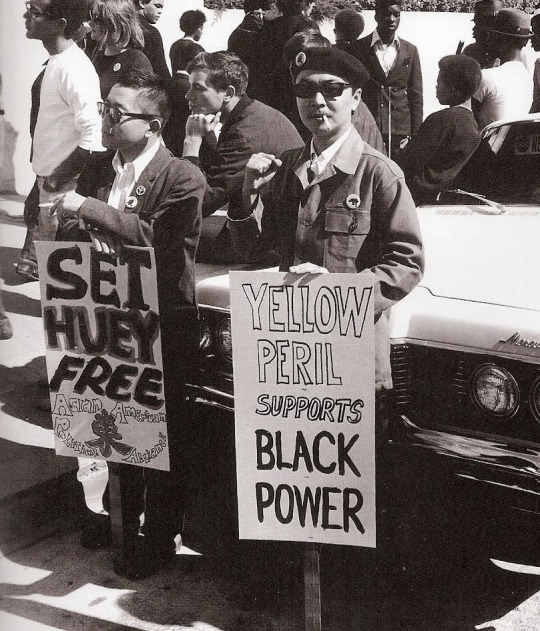
图右为Richard Aoki,他生前拒不承认和FBI有关
具体到50年代开始的黑人解放运动上,它历史呈现的问题就更为集中。我这里总结了五点。首先是以领袖为中心的记忆和分析,特别是在阐述黑人运动分歧的时候会调出MLK和马尔科姆X,似乎其他人的运动都是这两个人的注脚。即使谈论别的组织的时候,也存在这个问题,比如一说到黑豹党就联想到Huey Newton,而不太关注其他成员,特别是女性成员的贡献。
第二个问题是国家镇压被大量淡化。最典型的例子是50-70年代FBI在胡佛任下违法的COunter INTELligence PROgram,简称COINTELPRO。这个项目跟踪民权运动、新左派、黑人权力运动和激进左翼里大大小小的组织。FBI也直接策划了黑豹党非常有潜力的新星Fred Hampton和他保镖Mark Clark的刺杀。当时Hampton只有21岁,组织了一个非常有潜力的跨族裔联盟Rainbow Coalition,邀请了各个族裔的激进组织加入。这场官方拒不承认的谋杀也是黑豹党解体的主要原因之一。除了暴力镇压外,官方还通过伪造通讯等方式来对黑人运动各个击破,比如他们会伪装成其他组织的成员写信辱骂黑豹党,挑起组织之间的不信任,或者大肆宣扬某人是FBI或者CIA线人,这种策略也被叫做Bad-jacketing。FBI的COINTELPRO项目之所以为人所知,是因为1971年有八个行动者潜入了宾州FBI的地区办公室偷走了一千多个文档,这些行动者后来把文档全部公布给了主要媒体和国会,否则相关信息要晚几十年才会解禁。如今虽然FBI的监控和镇压受到一定程度的制约,它们旗下依然有专门的针对黑人激进派的监控项目,比如2017年泄漏的文价显示FBI把BLM看作“Black Identity Extremism” Movement的一部分,但这个运动完全是他们杜撰出来的。
在主流的论述中,黑人激进主义一直被认为是暴力的,分离主义的,引发社会撕裂的。即使是民权运动的支持者也往往持有这样的立场。比如Todd Gitlin等白人新左派一直以来都声称黑人激进派毁掉了民权运动族裔团结的改革成果。他们还认为黑人激进派背叛了民权运动,从而导致70年后代保守主义和文化战争的兴起。但其实真的去看60,70年代历史,会发现60年代的运动在当时未必弥合了社会分歧,那些黑人白人并肩作战的图景本就有很多浪漫化的成分,而反而被认为是分离主义的黑人激进派在70年代后做了很多族裔团结的工作。
黑人运动历史里女性,特别是底层女性的参与一直是被淡化的。比如知道Claudette Colvin 的人远远少于 Rosa Parks的,尽管前者才是第一个拒绝给白人让座的人。因为相比Colvin,Parks更符合抗争者的刻板形象,她是一个已婚的制衣女工,��在当地的NAACP任职,所以当时NAACP有意把她塑造成领袖。但Colvin是一个让座后不久就怀孕了的15岁单身黑人女性,她的身体是被社会污名化的,当时哪怕在黑人社区也没有一个行动家愿意宣传她的事迹。另外,Angela Davis在很多不同场合也提到过无数普通黑人女性的抗争造就了MLK,比如当时蒙哥马利公车抵制一开始是黑人女性组织发起的,而且搭乘公车的也大量是需要通勤的服务业黑人女工,但后来的历史叙述更多强调的是MLK等人事后介入的组织工作,MLK也因此成为了民权运动的核心人物。社会学家Belinda Robnett的研究还揭示,民权运动时期绝大部分黑人组织和黑人教堂普遍排斥女性的核心领导位置,黑人女性最多只能提拔到中层。所以组织内的排斥反向刺激她们去做更多协调、联络、教育的工作,成为了链接不同社区的节点。当时SNCC就是学生非暴力协调委员会的创办者Ella Baker就是个很好的例子,她做了很多运动的幕后工作,包括挖掘和培养下一代行动者。由于非常反感克里斯玛式的领导人气质,她更亲草根行动的风格也让她在民权运动的记忆中处在更边缘的位置。
最后一个问题是美国在任何话题上都非常擅长的美国中心主义。除了越战外,历史叙述很少把美国置于全球运动和冷战的框架下看。进入21世纪后这方面的论述多了很多,但总的来说还是十分不够,而且既有的论述很多都比较第三世界浪漫主义,没有太多分析60,70年代国际主义面向下更复杂的政治运动之间的博弈。 美国对六十年代的论述经常被置于一种简化的“Good Sixties/Bad Sixties”的二分,大概就是说六十年代的前半段是好的,运动都很非暴力,在体制框架内进行,也获得了一些民权上的进步。到了六十年代后期黑人权力运动兴起,一切都划向了暴动和骚乱。关于60年代这种二分法记忆如何被固化的著作也很多。第一本叫做Framing the Sixties, 是从政党政治的角度看两党政治人物怎么唤起60年代的记忆来为自己政党的议程服务。第二本书The Bad Sixties对80、90年代的影像作品做了分析,发现主流文化界通过突出好的60年代和各种白人亚文化产品,来有效消解黑人运动的政治性。大家可能���一边欣赏黑豹党的着装,认为他们开创了一种时尚潮流,一边反对他们背后黑人自决的意识形态。第三本书A More Beautiful and Terrible History则反思了美国社会如何通过纪念民权运动来推卸奴隶制和种族隔离的历史负担。民权运动被描述成一种美国社会的自我净化和救赎,为之后的色盲政治 (Colorbindness)铺路。
黑人权力运动的崛起和遗产
尽管民权运动时期就有了黑人权力的思潮,但是整个运动崛起还是在1960年代末期特别是1968年以后。对主流民权运动和SNCC在选举政治上努力的失望,从马尔科姆·X到MLK和肯尼迪的被刺杀所引发的普遍绝望情绪是很直接的诱因。越战也为黑人激进思潮的传播创立了机遇,因为第一次黑人,尤其是参战黑人直观感受到自己作为被压迫者,和被屠杀的越南人命运是相连同构的。前SDS成员Max Elbaum在Revolution in the Air里引用过一个60年代末的调查,显示30.6%参军的黑人希望回到美国以后加入一个类似黑豹党的激进黑人组织。
人们事后回望60年代的时候往往忽略的一个背景是,当时即使是早期MLK这样的温和立场,美国社会上支持他的人也是极少数。1966年其实只有28%的美国人对金有好感,说明民权运动在当年是绝对不具备舆论基础的。1961年五月底盖洛普针对刚开始的跨州Freedom Riders运动的调查,六成被访者都持反对态度。更能说明问题的是1963年March on Washington前后的舆论对比,黑人非暴力游行后,社会反而对黑人运动更抵触了,认为非暴力抗争伤害种族平等的比例从60%飙升到了74%。1966年的数据呈现同样的趋势,85%的白人都觉得民权运动伤害了黑人追求平等。所以很多白人新左派宣称的美国社会舆论因为黑人权力才走向保守的论断是站不住脚的。种族资本主义的捍卫者不会因为一个社会运动和理非而对它寄予更多的同情。所以是一直以来都十分坚固的白人至上思潮推动了黑人权力的崛起,而不是反过来的。
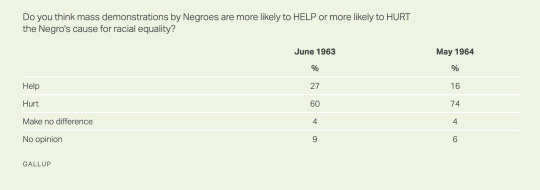
1963年March on Washington之前和半年后的舆论对比
一般认为最早的黑人权力组织是Revolutionary Action Movement(RAM),虽然当时并没有Black Power这个概念,但这个组织在黑人高校发展开始就一直强调全世界黑人的解放,它也比黑豹党更早接触到毛主义和列宁主义。因为RAM活跃的时期还在民权运动鼎盛时期,所以他们为了避免国家镇压一直是半地下工作,也导致这个组织虽然实际规模很大,旗下很多分部,但资料留存下来的非常少,很多都来源于CIA和FBI的档案。比如后来根据Freedom of Information Act公布的60年代CIA资料就显示他们被官方认为是当时最危险的组织。RAM也激励了马尔科姆x和黑豹党的创办,前��在伊斯兰国度之前是RAM的成员。
提出黑人权力这个概念的是Stokely Carmichael,他是在1966年March Against Fear中一场密西西比的集会上喊出这个口号的。早年他也是支持民权运动的温和派,参与过Freedom Riders运动,受到前述提到的Ella Baker影响,也领导过SNCC,但60年代中期他基本已经对民权运动的路线不再抱有幻想。Stokely喊出黑人权力的口号后,大部分民权运动领袖十分恐慌。当时的NAACP主席Roy Wilkins直接说这是”the father of hate and the mother of violence”,MLK也认为这个口号“unfortunate”,让Stokely收回,后者严词拒绝了。这种路线分歧除了时代变迁因素外,很大程度上也是代际问题。Stokely是1941年出生的,MLK是1929年,差了十几岁,所以Stokely回应的时候说我很尊重金博士,但是我们年轻人可没有他的耐心。在金被刺杀前Stokely和他还是有一些策略上的合作,但Stokely在立场表达上从未妥协过。

CIA解密档案中提到的1967年的Stokely发言,来源于:https://www.cia.gov/library/readingroom/docs/CIA-RDP83B00823R000800050002-3.pdf
MLK与马尔科姆·X的不同,民权运动和黑人权力运动的分歧经常被简化成是否接受暴力。但更本质的不同在于看待黑人解放的途径,究竟是要求白人国家给自己赋权和法律地位,还是自己夺取和定义自由。Malcolm X最著名的话之一就是“Nobody can give you freedom”。同时,黑人权力运动应该被看作一种网状的弥散式的结构,内部有很多不同的派别。有些组织支持黑人分离主义和独立建国,还有一些组织会信仰革命社会主义,一些组织,像伊斯兰国度有宗教色彩也不排斥资本主义,比如他们会支持黑人企业家创业。但黑人权力运动在整体的脉络上还是偏左翼,还是有一些共同的特点可以将之和民权运动区别开来。
首先,黑人权力大大拓宽了民权运动的范畴。因为民权是相对自由较为狭窄的概念,后者还包括在经济、教育、医保、住房等一系列面向上的平等。非常典型的例子就是黑豹党1966年起草的纲领性文件ten-point program,涉及免费医疗、教育、廉价住房和黑人免服兵役等问题,他们资金充裕的时候也一直在实践各种社区医疗教育治安项目。这种激进社区实践不只是内部试点,也激励了其他族裔的激进组织,比如另外一个纽约的亚裔激进组织I Wor Kuen (IWK,义和拳) 就有12-point program,而且它们的纲领相对黑豹党的有更强的性别意识,可能是美国所有激进组织里面最明确提出反对男性沙文主义的。
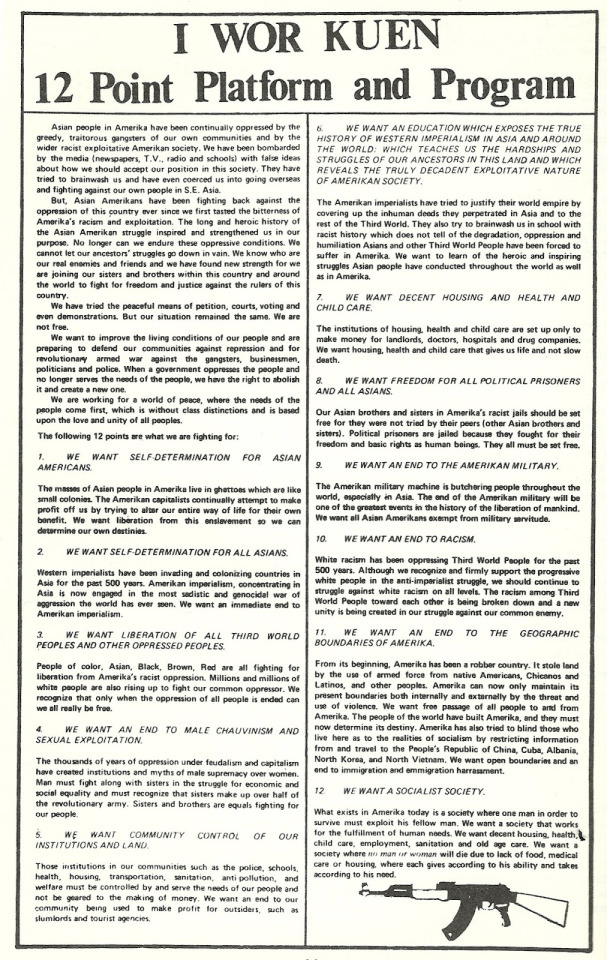
IWK的12点项目全文,来源于:https://asianamericanactivism.tumblr.com/post/68946140266/i-wor-kuen-12-point-platform-and-program-i-wor
民权和黑人权力第二个根本性分歧和很多对于移民的争议是类似的,即美国的移民需不需要逐步融入白人社会,还是可以保持自己的生活方式和政治。而黑人权力在保留自己族裔文化政治的情况下,进一步讨论了自决和独立的问题。一个典型的支持黑人自决的激进组织是1968年在底特律成立的新非洲共和国(RNA),RNA希望五个黑人人口占比高的南方州路易斯安那,密西西比,阿拉巴马,佐治亚和南卡独立建国,向美国索取每名黑人一万美金的奴隶制赔偿,等价于美国重建时期对黑人未兑现的许诺,同时请黑人投票自行决定是否加入新的国家。RNA计划定都亚特兰大,还选了当时在中国流亡的黑人运动家Robert F. Williams当临时总统,国旗则模仿美国的设计但是采用泛非主义的红、黑、绿三色。这些纲领现在听上去很不可思议,但当时这样的思潮绝对不是毫无社会根基的。RNA成立初期全国媒体关注度很高,这个组织在政治打压下也一直存活到了90年代。针对RNA的研究非常少,唯一一本著作是政治学者Christian Davenport的How Social Movements Die,分析RNA在国家镇压和内部派系分裂前逐渐衰落的过程。
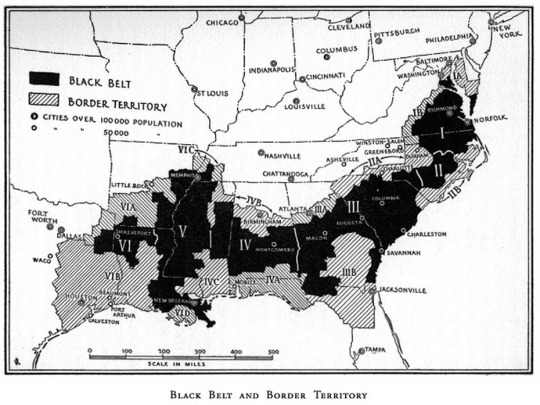
RNA计划的国土范围,来源于:https://christiandavenportphd.weebly.com/republic-of-new-africa.html
第三类分歧在于国际主义的程度。MLK自己当然也会说全世界人民的解放是重要的,但只有黑人权力运动真正建立了事实上的组织联系。比较典型的例子是黑豹党在阿尔及利亚的故事,这段历史目前最完整的叙述来源于Algiers, Third World Capital这本书。黑豹党的信息部部长Eldridge Cleaver 60年代末逃避审判流亡到阿尔及利亚,一开始受到新政府的欢迎成立了支部,对方还提供了办公场所。虽然BPP在海外只有这么一个分部,他们通过阿尔及利亚做了很多国际联络的工作,他还长期受到北越政府的资助。但随着时间发展黑豹党的分部和阿尔及利亚政府就产生了很多理念和资金上的冲突,后者一直希望把前者纳入自己自上而下管理的体系,还两次收缴了海外给黑豹党的大量资助。所以从这个案例也可以看到,一方面黑人权力运动的国际视角比民权运动要宽广许多,但是另外一方面很多国际连结内嵌在当时全世界的民族解放结构和美国国内对黑人运动的镇压里,这个外部条件的涨落还是很关键的。
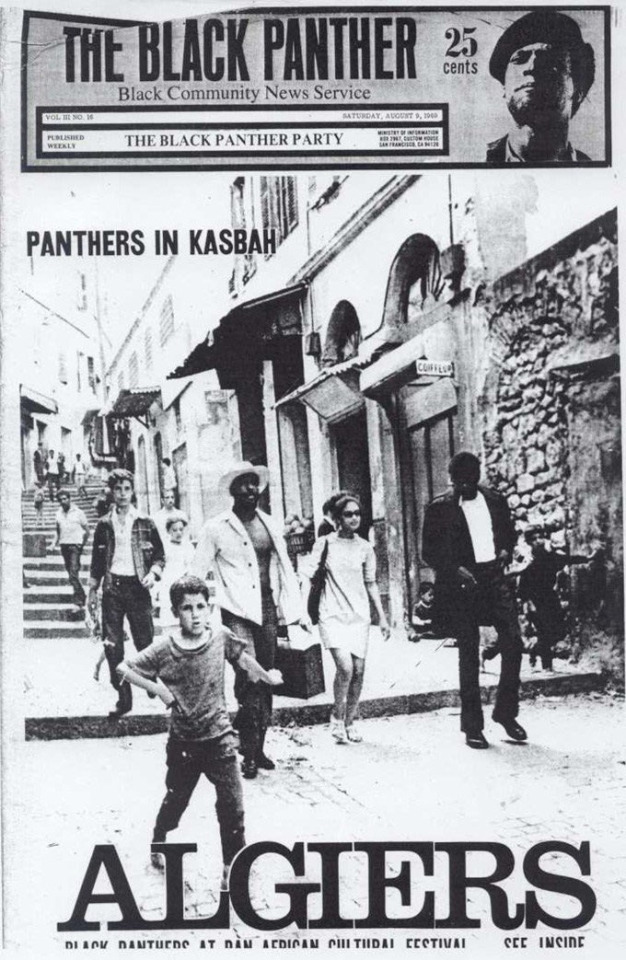
黑豹党党报对阿尔及利亚分部的报道,来源于:https://twitter.com/SanaSaeed/status/1279926765150928896
为黑人权力运动提供国际背景的泛非主义存在三个重要的时间点。从宽泛的意义上说,18世纪末的海地革命就有了泛非洲主义的色彩。当时海地起义军甚至和大革命中的法国普通市民有了跨大西洋的团结。这在CLR James早年的著作《黑色雅各宾》里面有很细致的描述。现代泛非运动大概出现于19世纪末20世纪初,那时候全世界激进思潮的传播都很快,从无政府主义到共产主义。同一时期黑人激进派建立了很多跨国组织,都致力于全世界非洲裔的解放。当时虽然交通没有现在便利,但现代签证制度还没有建立,像美国是1924年随着颁布限制亚洲移民的Johnson–Reed Act才有了签证,所以运动家跨国迁徙和流亡某种程度上更为容易。本尼迪克特·安德森在《全球化时代》还提到那时候具备的所谓早期全球化特征,电报、万国邮政联盟、蒸汽船和铁路建设都有利于跨国人口流动。到上世纪60年代的时候伴随亚非拉民族独立运动,已有的泛非思潮正好和黑人权力运动对接起来,所以黑人权力运动里面不少人物后来也都参与了泛非运动,包括Stokely自己,他甚至为纪念泛非运动改名为Kwame Ture。
牙买加人Marcus Garvey是早年泛非运动非常重要的人物,他1914年创办了最早的泛非运动组织Universal Negro Improvement Association and African Communities League (UNIA-ACL),当他移民到美国以后又在纽约哈勒姆建立了分部。加州奥克兰有个非常著名的黑人激进主义书店叫Marcus Book就是以Marcus Garvey命名,这次BLM抗议他们书店也收到了很多捐款。另一个重要组织是1968年由加纳流亡运动家恩克鲁玛成立的All-African People's Revolutionary Party,后来1972年也有了美国分部,Stokely1969年逃亡非洲以后就长期负责这个组织。所以社运的国际联系并不一定是从欧美开始辐射向全球的,很多都是在其他地区先发起然后通过国际移民传到了美国,这种边缘到中心的模式关注的人较少。
很多泛非运动的人其实都出生在加勒比地区,Stokely也是出生于特立尼达和多巴哥。加勒比行动者和美国社会运动的互动远远早于民权运动年代。比如20世纪初,就有很多加勒比的激进无政府主义者在纽约建立和参与了激进劳工和族裔解放组织,他们在哈勒姆文艺复兴中也扮演过很重要的角色。除了之前提到的早期全球化的趋势,历史学者Winston James这本Holding Aloft the Banner of Ethiopia里面分析到另一个很重要的原因,就是加勒比、西印度群岛的黑人移民,相对美国本土的黑人平均教育程度更高,阶级意识更强,同时他们在移民到美国前对种族隔离的感受不深。这些人到美国以后接触到白人才开始有了黑人的意识,但同时他们相对本土的黑人激进主义者更愿意和白人激进劳工运动家合作。也就是说加勒比的黑人激进派从Marcus Garvey到CLR James成为了美国白人激进派和黑人激进派间的桥梁,可以把种族和阶级的议题一起融合到解放性政治里头。这点非常关键,我在后面谈到左翼运动的种族问题时候还会进一步解释。
虽然上述提到的很多黑人权力组织已经不复存在,但他们以往的成员和后代现在往往还活跃在社运一线,或是就现在的运动提出自己的看法。也有很多人创办了非政府组织。所以如今各个城市的运动经常还能带上当年运动的特色。我这次讲座封面图片作者Emory Douglas前几年拜访墨西哥萨民解驻地,和行动者对谈艺术和政治行动的关系,他们的对话成果还出版了书籍Zapantera Negra。
黑人权力运动内部的意识形态多元而庞杂。黑豹党、伊斯兰国度、新非洲共和国等组织获得了大部分媒体关注,但其实还有很多小的组织。因为我住在费城,所以分享下本地一个很著名的黑人激进组织MOVE。MOVE1972年成立,除了黑人自决解放的纲领外,还有很强的绿色无政府主义色彩,比较反对工业化,有些历史学者认为他们受牙买加拉斯塔法里运动的影响。这个组织本来是很低调的,就在费城西边买了一排楼,组织成员过自治公社式的生活。但是78年的时候和费城警方对峙的时候,一名警察后颈被子弹击中身亡。为此费城警方坚称是MOVE方面开的枪,MOVE说他们的枪都是坏的不可能走火,是其他警察扫射到死者。官方没有给MOVE太多辩护机会,重判了九个人谋杀,大部分人刑期判了40多年,媒体把他们叫做MOVE9。目前这些人要么在监狱去世了,要么2018年以后才被释放,最新的情况是一位被判42年的成员Delbert Africa今年一月才被释放,六月就癌症去世了。
1985年的时候MOVE和警方再次发生冲突,由于警察没法让成员离开住所,他们就索性出动了直升机向MOVE的住所扔了炸弹,炸弹当时引发了现场大火,造成6名主要MOVE成员和5个未成年人死亡,60多栋房屋受损。2013年的纪录片Let The Fire Burn是关于MOVE和警方的冲突,片名就暗示说当时警方意识到房屋着火后,故意让消防车不要实施救援,等着火把MOVE成员吞噬。最后这场屠杀没有一个警官被审判。这场悲剧一方面导致MOVE基本被摧毁,另一方面也反向刺激了黑人权力思潮在费城的延续。这次费城BLM游行中,也可以看到关于MOVE的标语。

1985年MOVE爆炸现场的浓烟,来源于:https://thephiladelphiacitizen.org/the-lingering-trauma-of-move/
60,70年代任何社会运动都沾染了性别主义的色彩。黑人女权艺术家Michele Wallace写过一本当年争议极大的书Black Macho and the Myth of the Superwoman,因为这是第一本揭露黑人权力运动内部性别压迫的书。她认为黑人权力运动的厌女情节体现在运动强化了noble warriors 或者是 elderly statesman形象,要么是高贵的战士要么是年长的发言人,都是非常强调男性气概的。而且很多运动组织本身一直在强调要恢复黑人男性在社会的主导地位。这其实是对1965年一份著名的调查Moynihan’s The Negro Family的反击,当时这份报告认为黑人群体内部占四分之一的单亲母亲家庭导致了黑人过多依赖福利制度,经济文化上陷入落后的恶性循环。这份报告撰写人Moynihan本人其实写到了奴隶制以降的系统性歧视才是导致黑人家庭瓦解的原因,但后来这份报告完全被曲解逆练成为了保守派宣扬黑人“贫穷的文化”的证据。黑人权力运动针对这种污名化,等于是用一种同样扭曲的,���牲黑人女性自主性的方式做出了回应。
黑豹党内部的性别歧视就很能反映问题。Elaine Brown写过一本回忆录叫A Taste of Power,她是1974-1977年黑豹党陷入危机时候的负责人,因为领导人Huey P. Newton为了逃避审判流亡了古巴所以指定她接任。当时黑豹党的影响力已经消退,创办者之一Bob Seale已经因为内部分歧退党,组织成员各奔东西,剩下不到100人。Elaine在非常不利的局面下其实做了很多组织工作,包括拓展已有项目,增强和其他组织和政客的合作,极大延长了黑豹党的寿命。但后来大家在回顾黑豹党历史的时候,也倾向于完全忽略女性成员的贡献。Brown在回忆录里直接指出黑人女性在黑人权力运动中被认为无关紧要的。即使女性作为领导人,也被认为伤害了black manhood甚至黑人这个种族本身。
除了Elaine的回忆录外,The Revolution Has Come是黑豹党历史书里比较有性别意识的一本。尽管鼎盛期黑豹党成员六成是女性,总部和绝大部分分部的性别分化和歧视是非常严重的,比如后勤联络、教师和办报纸几乎都由女性操办,主要领导层历史上只有三个人是女性,而且都是因为和男性成员有亲密关系才被提拔。早期女性和男性的职位晋升渠道是完全分开的。组织内部集权也很严重,不同意Newton的人会被开除。这本书里说到一个非常有意思的现象是在组织发展后期,由于女性成员的贡献长期被忽视,她们不被上门来搜捕的警察认为是关键人物,于是长此以往组织里的男性都被抓走,女性终于得以填补空白进入管理层。这个和之前提到的黑人教堂排斥女性,催生她们成为社区层面的召集人的例子异曲同工,都是社会结构性歧视如何塑造女性运动家独特的政治抗争模式。
当然并非黑人权力运动就格外排斥女性,事实上民权运动和新左派运动里性别歧视是更常见和直白的。自由之夏项目招募学生的时候,筛选女性参与者一条很重要的标准是外貌。后来McAdam做研究时候意外翻出当年的档案,发现负责人在审查申请者资料时候一直在评论女申请者的长相,很多人因为外貌被拒绝参与。这些都构成了后来女权运动和黑人女权主义崛起的大背景。
美国左翼运动中的种族问题
美国左翼运动种的种族问题是最近很多人聊到的话题,似乎BLM这类黑人运动更多关注种族,更少关注阶级的问题。前几天刚被清场的西雅图CHAZ占领区也出现了这个矛盾,白人抗议者想把更宏大的反新自由主义运动的议程嫁接进来,但一些黑人会觉得这些议题会妨碍BLM和黑人解放这个更紧迫的焦点,尽管TA们一般都承认新自由主义是个更本质的底色。这个争论其实一直存在,比如2018年末新共和发了一篇文章“Do American Socialists Have a Race Problem”,以美国目前最大的左翼激进组织美国社会民主主义DSA为例子,讲述了美国社会主义者内部对有色人种的排斥。这篇文章当时引发非常大的争议,因为左翼内部的白人很少承认自己有种族主义的问题。确实,种族和阶级在美国政治里面一直是非常缠绕,很多情况下甚至互斥的议题,这也是导致和很多发达民主国家相比,美国总体政治光谱相对保守的一个原因。
杜博依斯曾有一个著名的论断,“黑人问题是对美国社会主义者最大的考验。”他在自己的很多著作里都细致地刻画了劳工政治的种族主义倾向,白人劳工往往认为自己的劳权受损都是因为黑人的存在。Viewpoint杂志的Asad Haider在2018年出版的Mistaken Identity里,也总结到白人之间的族裔团结一直以来高于美国有色人种之间的阶级团结。
对黑人的种族主义一直以来都是其他移民融入美国的粘合剂,黑人是所有新移民共同的敌人,通过歧视黑人来融入主流白人社会的逻辑一百年来都没有变过。弗里德里克·道格拉斯曾经分析过爱尔兰移民对黑人的仇视,他说爱尔兰人在自己祖国愿意和全世界无产者站在一起,但一到美国就被教育要仇视黑人,才可以成为白人。在《美国黑人的重建》一书中,杜博依斯一开始就提到了美国从19世纪初欧洲移民涌入,到内战再到20世纪初一直并行的两类劳工运动:一是黑人劳工获取法律承认,后来也成为民权运动的由头,二就是白人移民劳工争取土地和更高的工资,后来就演化成了很多早年种族隔离的工会比如AFL。这两个运动偶尔会有一些联合,但是总得来说是互相冲突的。因为在不同时期,白人移民劳工,包括还有很多底层的白人都认为黑人压低了工资,抢了他们的工作。
现在关于欧洲移民怎么变成白人的著作已经非常多,最早有影响力的著作是1991年出版的The Wages of Whiteness,之后依据这个思路就有很多类似的文献。这些后来的文献,比如Working Toward Whiteness会更细致地描摹美国的欧洲移民除了心理上觉得自己总是比黑人高一等外,是如何一步步将自己美国白人化的,包括如何通过加入排斥黑人、墨西哥人和亚洲人的工会试图让自己和本地白人劳工平起平坐,通过购买房产来和买不起房的黑人的区隔开来。另一方面,美国的各种移民法律,比如1924年的移民法案限制了很多国家的移民进入,导致北部需要更多的黑人劳工来代替之前移民的工作。这也使得美国社会,特别很多商家开始比较黑人和移民劳工的优劣,从而觉得“有些移民比别的移民和黑人更平等“。
游天龙老师在之前的讲座提过由于在正规就业市场被歧视,亚裔经常被雇佣来当白人罢工的工会打手。其实当时黑人被雇佣是更普遍的现象,因为黑人男性除了和亚裔一样工资很低外,也一直被认为更强壮暴力,同时身体更能忍受痛苦。20世纪早年这些走投无路的工会打手都是由专业公司跨州雇佣,通过铁路统一运输的,所以雇佣的成本���进一步降低。另外,由于受到绝大部分工会的排斥,黑人劳工对白人工会存在怨恨,这也使得他们参与反罢工的时候带上了一些报复的心理。一个典型的例子是1919年席卷全美的钢铁行业大罢工中,绝大部分罢工打手都是黑人,而组织者一方AFL正巧拒绝黑人会员。所以最后这场罢工变成了资方雇佣的黑人和白人劳工的对战,非常有效瓦解了劳工的团结。这场罢工之后整个钢铁行业劳工运动一蹶不振,15年后才有新的罢工。
关于美国工会和种族主义的历史,还可以参考Mike Davis的经典作品Prisoners of the American Dream。他的核心观点之一就是历史上工会的种族主义让美国劳工运动一直都比其他欧陆国家保守和官僚主义,这是所有左翼思想家都没有预料到的。美国工会的官僚化具体包括疏于培训草根运动家,排斥其他左翼组织,不愿意纳入女性主导的文书职位和有色人种占多数的南方农业工种,不与民权运动合作等。
一个例外是1905年在芝加哥成立的IWW,世界产业工人联合会。IWW一直是跨种族、性别和国界做动员的,这也是受19世纪末20世纪初劳工无政府主义思潮的影响,认为全世界劳工不分职业应当隶属于同一个工会,所以它们的信条叫”One Big Union”。但这绝对不是劳工运动的主流,IWW哪怕在鼎盛时期也只有15万劳工会员,而同时期AFL旗下一个大行业分会,比如钢铁行业的人数都可以有30到40万。IWW的组织现在还有,在一些中大型城市集会和罢工中还可以看到他们组织的身影。但60年代开始,IWW开始直接介入民权运动,后来就更像一个社会运动组织而不是典型的工会。而且IWW是允许劳工隶属于别的工会的,所以其对旗下劳工的管理也更松散。华盛顿大学历史系做过一个IWW的数据库,里面有很多珍贵的史料和可视化,推荐给大家。
早期的美国共产党在族裔团结上构成了另一个特例。20世纪早期美国共产党曾经积极动员过黑人激进派。最明显的一个例子是1920年前后有个黑人秘密会社叫做African Blood Brotherhood,是当时一个记者和出版人Cyril Briggs创办的(这个人也是加勒比的移民),Claude McKay, 和Harry Haywood也是成员。这个组织内部有社会主义倾向的人后来和美共有很多合作,最终甚至直接成为了CP的一个分部。Harry Haywood是其中最著名的一位,他去苏联学习过,见过包括胡志明在内的很多人。根据美共三十年代初的组织宣传材料,可以看到TA们有鲜明的种族立场,支持南方黑人的自决,和RNA立场接近。但很遗憾的是,从30年代后期开始美共就已经逐步弱化对种族主义的讨论,当时也以散布黑人分离和民族主义为理由驱赶了很多黑人激进派。直到1959年CPUSA正式放弃了美国黑人民族自决的口号。他们觉得随着资本主义的发展和深化,黑人白人自动会团结起来。那个时候民权运动正是如火如荼的时候,美共不但没有有利介入黑人解放运动,白人负责人反而开除了Harry Haywood等一系列黑人成员。基本上从这个节点开始,美国的左翼激进主义运动,至少从组织成员来看形成了种族分化的格局,直到今天都是如此。
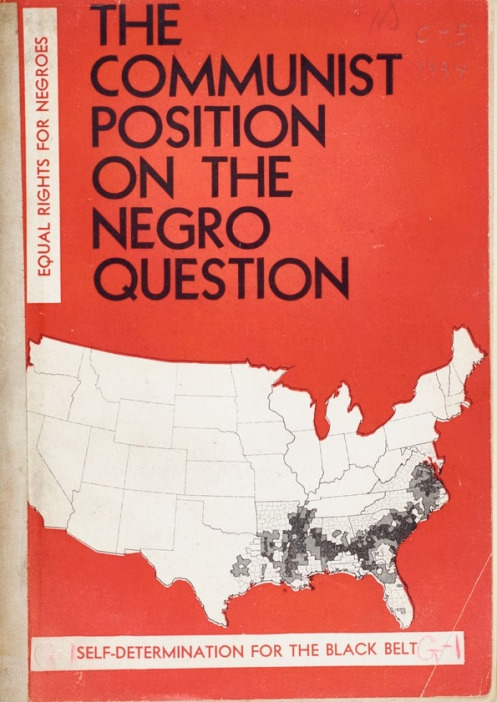
1930年代美共的黑人自决宣传材料,来源于:https://wolfsonianfiulibrary.wordpress.com/2018/01/15/civil-rights-and-the-cpusa/
美国主流的民权运动历史经常把70年代说的非常不堪,好像除了尼克松为首的保守派开始反击外社会抗争全面停滞,但这个完全不符合事实,其实70年代中期美国的劳工运动才达到顶峰,而这个高峰的到来和黑人解放运动密不可分。60年代以后,随着黑人权力运动的兴起,黑人激进派就开始自立门户。1968年底特律道奇工厂发育出来的劳工组织the Dodge Revolutionary Union Movement (DRUM)领导旗下工人罢工,是民权运动以后第一次彻底关停了工厂的罢工。由DRUM发展起来的the League of Revolutionary Black Workers是70年代最重要的黑人激进组织,卷入了几乎所有重要的罢工,也动员了很多白人劳工。但从组织层面,出于对白人的绝望,这些组织都只允许有色人种加入。The League也是最早提出并为reparations募集到款项的组织,动员白人���教组织拿到了至少20万美金的捐款,所以不该预设所有白人都本能排斥黑人权力运动的理念。到80年代纽约还成立了The National Black United Front,到现在这个组织还比较活跃。90年代末Black Radical Congress在芝加哥成立,曾经聚集起了很多黑人运动家、泛非主义者和学者,包括Angela Davis,这些人也试图和其他族裔的激进派进行更密切的合作。所以其实60年代末民权运动消退以后,黑人运动还是得到了长足的发展。关键问题是当黑人发展自己的运动组织后,因为社运历史的记录者往往是白人,所以这些努力就不太容易被人看见。Michael Dawson在Blacks in and out of the Left里就很详细解释了黑人如何和白人左翼思潮渐行渐远,白人新左派也一直都不愿意承认黑人权力运动对族裔解放的作用,然后久而久之黑人激进派就被边缘化了。
那总结下,一系列原因共同导致了美国的种族和阶级撕裂了激进主义运动。首先欧陆马克思主义思潮的历史遗产导致很多左翼认为阶级斗争优先,种族只是阶级的反映。很多左翼组织内部也无人读杜博依斯、法农等黑人思想家的作品。从美共的历史也可以看到核心组织在分化中逐步远离黑人运动。再者,黑人激进派受到普遍的国家暴力,被迫转入地下。战后兴起的郊区化和居住隔离也很可能对左翼政治不利,因为左翼是非常依赖面对面社区动员的,但居住隔离导致左翼动员不到底层黑人,也难以建立跨族裔联盟。这些因素带来白人黑人互不信任的长期影响,不同族裔建立单独的激进左翼组织,这也导致黑人激进派愈发被孤立,在主流政治里处于边缘的地位。
所以如今至少从选票的层面,自由主义的思潮基本上主导了美国的黑人政治,奥巴马之年也一度巩固了很多人的幻觉,目前为止黑人对民主党的依附性还是很强。同时因为长期的打压,黑人激进派一直处于相对边缘和半地下的状态,一般没法像白人组织一样会公开招募成员,很多社区也没有登记为社会组织。但是另一方面,近些年BLM运动让黑人运动有重新激进化的可能性,参与运动的黑人运动家一般都不会在两党政治的框架下思考种族解放,核心运动家绝大部分都在其他左翼、劳工和LGBTQ组织任职。比如提出BLM口号的三位黑人女性Alicia Garza, Opal Tometi和Patrice Cullors都同时活跃在各类劳工和移民运动中,她们也在不同场合强调BLM是跨越国界的。
目前,美国当代左翼组织的事实性种族隔离还是非常严重。很多大众也已经有了左派都是白人的刻板印象,而不愿意多和他们来往。这里列举四个比较主要,立场又不太一样的白人左翼组织。说白人组织不是说这些组织就没有有色人种成员,而是非白人的比例非常低,组织内部有色人种成员也往往经历明显的歧视。The Democratic Socialists of America (DSA)是目前全美最大的左翼组织,有七万多付费会员。它曾经是相对保守的组织,是借着80年代很多更激进组织解体时候趁乱成立的。它的种族主义问题也很久了,80年代的时候DSA没有支持民主党激进派黑人候选人Jesse Jackson的总统竞选,史学家一般认为是组织内部种族主义导致。这两年随着组织内部有更多新的成员,有一些分部有了更多内部种族主义的反思。Socialist Alternative (SA)是一个托洛茨基主义的组织,它在美国的知名度基本是靠当选西雅图市议员的Kshama Sawant提升的,目前Sawant还在市议会任职,也积极支持参与了当地的占领运动。Party for Socialism and Liberation (PSL)基本是个白人斯大林主义组织,经常持比较教条的立场,但他们对拉美政治的关注可能是所有组织里最强的。Redneck Revolt (RR)是个很有意思的左翼拥枪组织。所以这也有助于打破白人拥枪的都是红州保守主义者的刻板印象。
当前以黑人为主的左翼组织内部意识形态也很多元。Black Socialists in America (BSA)是2018年才成立的黑人社会主义组织,很大程度是为了回应DSA的种族问题,当然相比DSA,BSA的公开活动要少很多,成员都是匿名出镜。Revolutionary Abolitionist Movement (RAM)是无政府主义的社区,它们也有仿照黑豹党的十点纲领,包括废除警察军队和监狱。所以现在Defund the Police运动中确实是有希望彻底废除警察的一派的,也没必要否认和切割。Cooperation Jackson是一个2014年密西西比杰克逊成立的合作社网络。Huey P Newton Gun Club顾名思义是以黑豹党前领导人的名字命名的拥枪组织。总的来说在美国的左翼政治版图里,黑人左翼会更偏无政府主义一些。因为一来在践行民主集中制的混合族裔组织里,黑人肯定是被压迫的;二来无政府主义组织更去中心化,可以更有效地规避国家的监视和镇压。
黑人解放运动与BLM2020
最后谈一下对目前BLM的一些观察,以及和之前提到的黑人运动历史之间的关系。进行了一个多月的BLM虽然由反警察暴力开始,但发展到现在已经有了更多的议题。虽然在中文网络上可能还是有很多反对的声音,但在美国本土,BLM从成立以来第一次有了大部分人口的支持。
从民意调查上来看,BLM口号在2012年奥巴马任下刚提出来的时候是完全没有群众基础的,这和历史上所有黑人运动,甚至社会运动的命运都是一样的。公众对社会运动的高支持度,往往是参与者不断动员、说服、制造领导权的���果。对比2016年和今年的数据,可以看到2016年的时候,YouGov调研的美国被访者只有27%明确支持运动,这个比例到今年翻了一倍不止。当然这里有个问题是今年没有中立这个选项了,所以很多人态度可能向支持方向位移,但明确反对运动的人也减少了不少。然后很有意思的是中间派独立选民的意见变化幅度是最大的,也就是说其实运动动员起来了大部分中间选民,但基本没有让共和党选民改变看法。
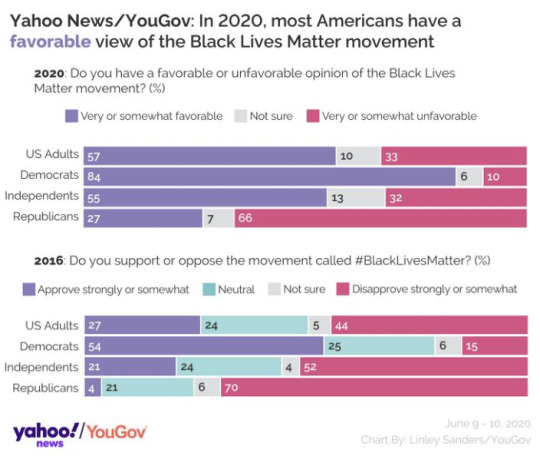
党派与BLM支持,来源于:https://news.yahoo.com/new-yahoo-news-you-gov-poll-support-for-black-lives-matter-doubles-as-most-americans-reject-trumps-protest-response-144241692.html
从皮尤归纳的分族裔的支持度来看,除了各族裔总体更支持BLM外,拉丁裔的观念变化是最剧烈的,直接从2016年的比白人更不支持到目前77%的高支持度。我希望会有更多的研究出来论证��体的机制,但个人总体感觉是这次全国范围的BLM通过把黑人的处境置于其他少数族裔和移民面前,从而极大促进了少数族裔之间的自我教育和团结。这里没有亚裔的对比数据,但之前有个单独的调查发现抗议下亚裔对警察的观感下降是最明显的。最近针对亚裔为何不支持黑人运动有很多辩论,我想说其实对拉丁裔来说,除了无证移民,很多人同样很难共情黑人的处境。这次抗议期间拉丁裔内部,特别是白人拉丁裔同样有反省自身的anti-Blackness,甚至也有如何和父母和老一辈有效对话这种讨论。所以其实亚裔也可以通过和拉丁裔的连结,来互相指认和创造性地面对社群内部种族主义的问题。
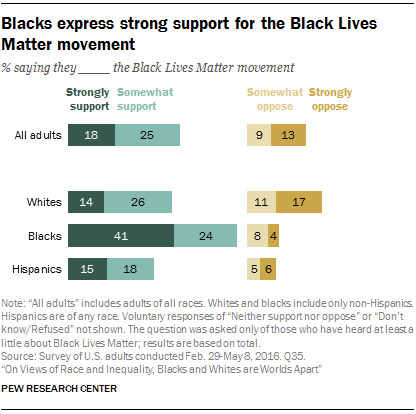
2016年BLM分族裔支持度,来源于:https://www.pewresearch.org/fact-tank/2016/07/08/how-americans-view-the-black-lives-matter-movement/
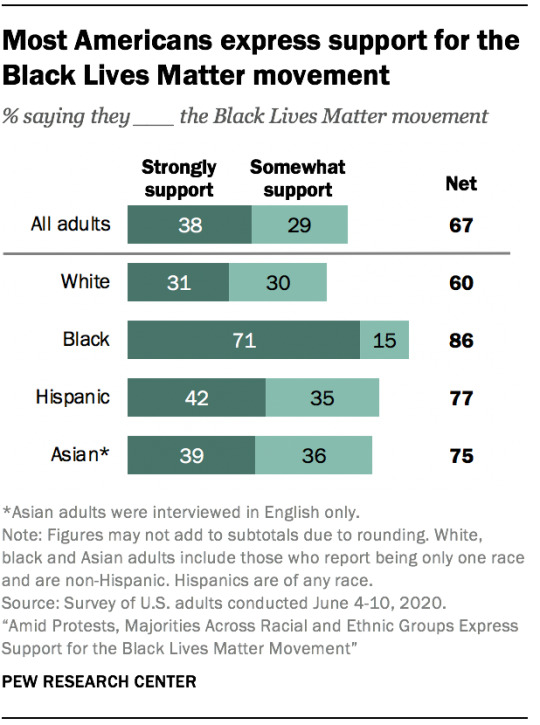
2020年BLM分族裔支持度,来源于:https://www.pewsocialtrends.org/2020/06/12/amid-protests-majorities-across-racial-and-ethnic-groups-express-support-for-the-black-lives-matter-movement/
最后这张图表是皮尤同一个调查里不同人口变量与政治参与行为的交互,可以看到拉丁裔、亚裔的参与比例和黑人十分接近。甚至在给组织捐款上,亚裔的比例要远远超过其他族裔。按照右图给出的过去一个月的抗议参与比例,也是只有白人在拖后腿,且亚裔的参与度是所有族裔中最高的。我们觉得亚裔参与度低还是因为亚裔总人数真的太少了,很难在抗议中彼此看见。当然这类调查经常只访问会说英语的亚裔,所以实际比例会低一些,但至少说明年轻一代的政治参与热情是非常高的。
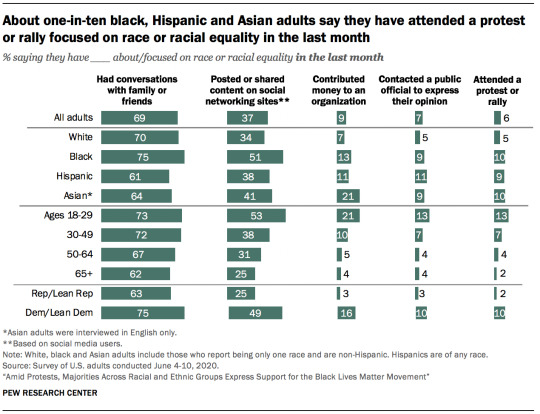
Pew不同人口变量与BLM政治参与行为的交互,来源于:https://www.pewsocialtrends.org/2020/06/12/amid-protests-majorities-across-racial-and-ethnic-groups-express-support-for-the-black-lives-matter-movement/psdt_06-12-20_protests-00-10/
BLM运动跨种族的高支持度伴随的是其去中心化的特征。在我看来去中心化具体是和三个子特征结合起来的,商业化、城市社区化和大规模监控。但凡社会运动发展到一定程度,多多少少会有一些商业化的色彩,或者说更多企业看到民意愿意去支持BLM的诉求。早期可能是耐克这样的运动企业会支持,因为顾客里就有很多黑人,但现在亚马逊、Spotify、Netflix这类互联网公司也加入了挺BLM的阵线。讽刺的是,亚马逊恰恰是造成黑人持续贫困和被压迫的根本原因。它造成的士绅化,对旗下服务业劳工的压榨、Covid19下对仓储和WholeFoods罢工的镇压都很能说明它支持BLM的虚伪性。亚马逊2018年的时候还被爆出将旗下一个面部识别软件Rekognition卖给警方。在这样的背景下,BLM运动内部肯定会有策略性支持商业公司的,也有反对被资本主义收编的激进派。这种运动内部的立场如何在一个去中心的结构下做协调配合,而不是拉锯内耗,对未来的运动是一个挑战。
这次各地上街的人数很多,口号也很齐整统一,但每个地方的运动势能和诉求差异其实很大。因为像Defund the Police这种诉求落实肯定是要运动参与者和当地的市长、市议会、警察部门斗争和斡旋。警局的预算一般都是市议会批准的,比如不久前白思豪批准市议会砍掉了NYPD下一个财年7%的预算。还有拆种族主义雕像和壁画的话各地的情况也非常不同,还有一些历史雕像可能在其他少数族裔社区和大学,还需要抗议者和社区负责人、各类社会机构进行协调。
另一个去中心的因素,则在于不同城市社会运动的历史遗产不同,我这里举西雅图和我居住的费城的例子。这次西雅图抗议最特殊的地方就是CHAZ/CHOP占领区。这个区域几天前已经被清空了,但还是留下不少宝贵的运动经验和教训。之所以西雅图可以成功实现占领而非简单的游行,和本地有几十年历史的占领文化和无政府主义社区的兴盛是很有关系的。最晚从70年代开始原住民和拉丁裔社群就组织过不少占领荒地和学校的行动。CHOP占领区有各个不同社运组织的力量,除了BLM的人外也有大量当年参与Occupy的社群,还有一些这次疫情下涌现出的互助组织。因为Occupy的白人占大多数,所以运动内部一直都有种族和运动路线的矛盾,比如自治和占领的议程是否会干扰更紧迫的警察改革,这些争议直到占领结束也没有缓解。但总的来说,西雅图之前各个族裔联合抗争的历史对这次的运动有非常大的帮助。
相比之下费城的政治生态就非常不同。这里有非常强的黑人权力运动的历史,美国第一个黑人权力运动组织RAM当年总部就是在费城,其他黑人权力组织在费城也都有分部,当然还有MOVE。今次BLM运动里,西费城的行动者纪念MOVE爆炸三十五周年还特别制作了短片,可以看到现在费城的社运还是受到当年历史很强的影响,诉求要比其他地方激进很多,比如这里的运动家是反对"Hands up, don't shoot”这种自我矮化的口号。虽然很多这类抗议吸引不了全国媒体的关注,但是对本地政治是有很大影响的。
最后一个挑战就是如何应对大规模监控。美国的黑人运动受到的国家监控是最严密的。这次各地的BLM示威,各城市和州警察、国民警卫队、FBI和军方都派出了无人侦察机和巡逻机,监控达到了军事级别。仅仅国土安全部和海关执法局就直播和录制了至少270小时的抗议人群画面,这还不包括其他地方部门的档案。面对这种监控,我认为美国运动者做得还是很不够,很多消息发布和沟通都靠公开的脸书、推特和Instagram,反而是Boogaloo等右翼运动更多用加密软件。目前电报上最大的BLM频道只有不到一万关注者,完全不成体系,这可能对未来的运动协调造成伤害。
谢谢大家。
参考读物:
Bothmer, Bernard von. 2010. Framing the Sixties: The Use and Abuse of a Decade from Ronald Reagan to George W. Bush. First edition edition. Amherst: University of Massachusetts Press.
Brown, Elaine. 1993. A Taste of Power: A Black Woman’s Story. 1st Anchor Books ed edition. New York, NY: Anchor.
Davenport, Christian. 2014. How Social Movements Die: Repression and Demobilization of the Republic of New Africa. New York: Cambridge University Press.
Davis, Angela Y. 2016. Freedom Is a Constant Struggle: Ferguson, Palestine, and the Foundations of a Movement. 4TH PRINTING edition. edited by F. Barat. Chicago, Illinois: Haymarket Books.
Davis, Mike. 1999. Prisoners of the American Dream: Politics and Economy in the History of the US Working Class. Verso.
Dawson, Michael C. 2013. Blacks In and Out of the Left. Harvard University Press.
Du Bois, W. E. Burghardt. 1998. Black Reconstruction in America, 1860-1880. 12.2.1997 edition. New York, NY: Free Press.
Elbaum, Max. 2018. Revolution in the Air: Sixties Radicals Turn to Lenin, Mao and Che. New edition. London: Verso.
Haider, Asad. 2018. Mistaken Identity: Race and Class in the Age of Trump. London ; Brooklyn, NY: Verso.
Hoerl, Kristen. 2018. The Bad Sixties: Hollywood Memories of the Counterculture, Antiwar, and Black Power Movements. Jackson: University Press of Mississippi.
James, C. L. R. 1989. The Black Jacobins: Toussaint L’Ouverture and the San Domingo Revolution. 2 edition. New York: Vintage.
James, Winston. 1998. Holding Aloft the Banner of Ethiopia: Caribbean Radicalism in Early Twentieth Century America. London ; New York: Verso.
Léger, Marc James, and David Tomas, eds. 2017. Zapantera Negra: An Artistic Encounter Between Black Panthers and Zapatistas. Brooklyn, New York: Common Notions.
Leonard, Aaron J., and Conor A. Gallagher. 2018. A Threat of the First Magnitude: FBI Counterintelligence & Infiltration From the Communist Party to the Revolutionary Union - 1962-1974. London: Repeater.
McAdam, Doug. 1990. Freedom Summer. 1 edition. New York: Oxford University Press.
Mokhtefi, Elaine. 2018. Algiers, Third World Capital: Freedom Fighters, Revolutionaries, Black Panthers. Verso.
Robnett, Belinda. 1997. How Long? How Long?: African American Women in the Struggle for Civil Rights. 1 edition. New York: Oxford University Press.
Roediger, David R. 2005. Working Toward Whiteness: How America’s Immigrants Became White: The Strange Journey from Ellis Island to the Suburbs. New York: Basic Books.
Spencer, Robyn C. 2016. The Revolution Has Come: Black Power, Gender, and the Black Panther Party in Oakland. Durham: Duke University Press Books.
Stevens, Margaret. 2017. Red International and Black Caribbean: Communists in New York City, Mexico and the West Indies, 1919-1939. London: Pluto Press.
Theoharis, Jeanne. 2018. A More Beautiful and Terrible History: The Uses and Misuses of Civil Rights History. Boston: Beacon Press.
Ture, Kwame, and Charles V. Hamilton. 1992. Black Power : The Politics of Liberation. New York: Vintage.
Wallace, Michele. 2015. Black Macho and the Myth of the Superwoman. Reprint edition. London: Verso.
Whatley, Warren C. 1993. “African-American Strikebreaking from the Civil War to the New Deal.” Social Science History 17(4):525–58.
6 notes
·
View notes
Text
Richard Gitlin – Thursday, February 23, 2017
Connect:
Richard Gitlin’s talk was slightly different than most of the presenters in the past, as he focused more on his personal experiences and accomplishments rather than the theory behind them. His talk connected perfectly with the video we were assigned to watch this coming week, “Our approach to innovation is dead wrong” by Diana Kander. Although these talks were on slightly different subjects, Richard Gitlin and Diana Kander made it very clear that things don’t always go according to any plan, and that some of the best ideas and relationships come from just putting your ideas out there and seeing what works. They both also talked about how if you plan everything out, there is no room to be imaginative and try risky things that could pay off.
When Richard Gitlin became part of Bell Labs, a scientific development company, he looked around and saw such raw talent. He explained that he thought to himself that he couldn’t possibly compare to many of the people there, but he still put himself out there and used many of the Habits of Mind and innovator should have. For example, he listened with understanding and empathy to all of his coworkers to see how they were rising within the company. He found that it was the innovators who changed the way work was done that made the big leaps. He also persisted with his ideas, and didn’t let the mismanagement above him keep him from working on his passions. For example, when working on DSL one of his superiors tried to get him fired for not focusing on the work he was assigned.
Mismanagement was a really important topic Richard Gitlin brought up, and it also connects very well with Diana Kander’s Ted Talk. For example, Mrs. Kander talked about her karate skills, and how she was learning in a box for a challenge that was far outside of it. If she didn’t look at all the possibilities, her skills would be useless in most ordinary settings. Richard Gitlin thought this way too, when he was told to go back to his assigned work, he knew that his idea was much more valuable to the company then what they thought. He used Steve Job’s quote, “ignore what people think they need and giving them what they want before they want it,” to address this concept. And he was right, his boss above him saw the potential and actually fired his manager for his mismanagement.
Trying to view this from the manager’s perspective, there are some upsides to sticking to a plan. Everyone in a company would be on the same page if a plan was enforced. This would provide workers with ease of mind that everyone is doing what they’re supposed to be doing to secure the company and their jobs. Additionally, if the plan was originally set up in a way that also provided some freedom in development and creative thinking, this wouldn’t be a problem. In that way, I think a major part of “mismanagement” has little to do with the manager themselves and more with the companies strategies as a whole.
Another interesting point Mr. Gitlin made was that of attending to the root cause of problems rather than overlooking them and trying to mask them. He spoke briefly about his start up company, and how it ultimately failed because they skipped over fundamental problems that made the software fail. This way of thinking goes against one of the key Habits of Mind – striving for accuracy. If they had fixed this key issue instead of glossing it over, their company would have likely survived. Its like the old saying, a chain is only as strong as its weakest link.
Apply:
There were a lot of points that Richard Gitlin brought up in his presentation that I can see myself using in my own life. The most important to me was the concept of mismanagement. If I’m ever in the position of being a manager, I would definitely feel the urge to go by my plan. But sometimes it’s clear that the manager isn’t the smartest or most experienced member of a group, and that any member of a team could potentially bring ideas to the table that seem dangerous but are actually amazing. If I were ever faced with this predicament, I would try to look at this innovation or idea from the perspective of the worker, and try to see the merit within it. Obviously not every idea or deviation from the plan is the right direction for a company, but its definitely worth looking into them instead of just shrugging them off.
Another important thing I took from Mr. Gitlin is to never burn any bridges. I’ve heard this a lot in my life, but it’s important to hear it from someone who is so successful. The idea is clearly that you never know what could happen, and if you kick people out of your life you lose any potential benefit from having them as a friend or coworker. Additionally, it could come back to haunt you if they put a bad word about you out. If I were ever in a predicament where I had to leave a company, even if I didn’t like my employer or coworkers I would never say a bad word to them.
Questions:
1. Have you ever burned a bridge that ever came back to haunt you? If so how?
2. Would you ever try to restart your startup company? What would you do differently?
3. Do you think you have everything in your “tool belt” to be an effective leader?
0 notes
Text
UG! COMEDY SHOW!! TUESDAY JAN. 14TH, 2020 ED.
UG! 4 Lyfe, UG! 4 Ever!! This Week We Carry On The #FUNNY w/ These Folks:
Sensational Shauna Lane! - https://www.shaunalane.com/

Honest Gabe Morales! - https://twitter.com/moralesgabe

Teflon Tania Lewis! - http://www.tanialewiscomedy.com
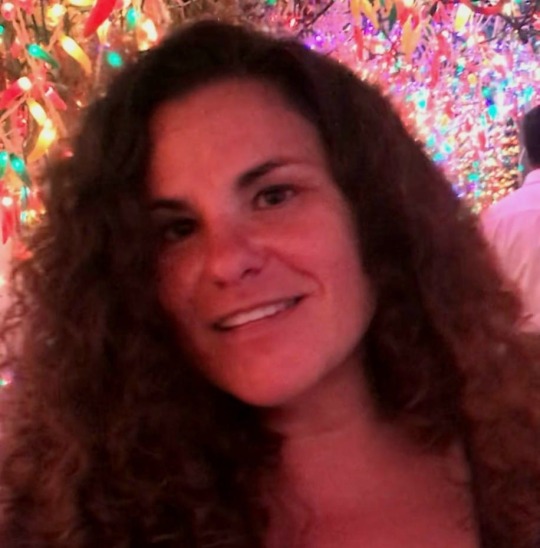
Even-Keeled Erik Monical! - https://twitter.com/erikmonical

Powerful Preston Gitlin! - https://www.facebook.com/mentalhealthcomedy/

High Energy Harmon Leon! - https://www.harmonleon.com/

& Jovial Josh Alba! - https://twitter.com/joshuaalba
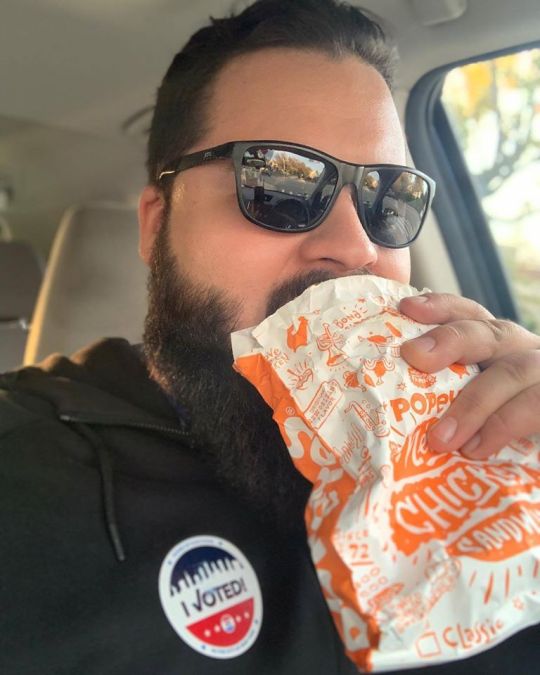
w/ Special Guest Host This Week Robin Siegel Lakin! - https://www.facebook.com/robin.s.lakin

Featuring The One True King of UG! Todd Montesi!

& The Big Bawse Hawse Christopher Wagner!!

DJ’d By Prodigal UG! The Son Richard James!!

#UGIT
UG! COMEDY SHOW!! @ Drexler’s
Presented by Todd Montesi & Richard James
9 Ave A (btwn E. 1st & 2nd st
Showtime: 8:30PM No Cover 1 Drink Min
For info/reservations: (646) 524-5226
Via Subway: F train to Second
#Todd Montesi#richjames#christopher wagner#Harmon Leon#Robin Siegel Lakin#abe Morales#Shauna Lane#Tania Lewis#Erik Monical#Preston Gitlin#Josh Alba#UG! COMEDY SHOW!!#Tuesday January 14th#2020#stand up comedy#Drexler's#9 Ave A#Tuesdays#New York City#free nyc#free stand up comedy#lowereastside#east village#nightlife#Comedy Show#after party#Alphabet City#ugit
1 note
·
View note
Video
youtube
Murdoch's misinformation: COVID-19, China and climate change | The Listening Post by Al Jazeera English From the United States to Australia, Rupert Murdoch's media empire regularly courts controversy. Its coverage of COVID-19, however, is on another level. The Listening Post's Flo Phillips reports on the Murdoch factor in COVID-19 coverage. Contributors: Anne Davies - investigative reporter, The Guardian Australia Carl Cameron - former political correspondent, Fox News and founder, Front Page Live Anthony Klan - former investigative reporter, The Australian and founder, The Klaxon Todd Gitlin - professor of journalism and sociology, Columbia University and Chair of Communications, Columbia University David Folkenflik - media correspondent, NPR and author, Murdoch's World: The Last of the Old Media Empires Malcolm Turnbull on the Murdoch monopoly The Listening Post's Richard Gizbert speaks to someone who has known Rupert Murdoch for decades and is now one of his most outspoken critics: The former prime minister of Australia, Malcolm Turnbull. Contributor: Malcolm Turnbull - former Australian prime minister and author, A Bigger Picture - Subscribe to our channel: https://ift.tt/291RaQr - Follow us on Twitter: https://twitter.com/AJEnglish - Find us on Facebook: https://ift.tt/1iHo6G4 - Check our website: https://ift.tt/2lOp4tL
0 notes
Link
A Letter on Justice and Open Debate
July 7, 2020
The below letter will be appearing in the Letters section of the magazine’s October issue. We welcome responses at letters@harpers.org
“Our cultural institutions are facing a moment of trial. Powerful protests for racial and social justice are leading to overdue demands for police reform, along with wider calls for greater equality and inclusion across our society, not least in higher education, journalism, philanthropy, and the arts. But this needed reckoning has also intensified a new set of moral attitudes and political commitments that tend to weaken our norms of open debate and toleration of differences in favor of ideological conformity. As we applaud the first development, we also raise our voices against the second. The forces of illiberalism are gaining strength throughout the world and have a powerful ally in Donald Trump, who represents a real threat to democracy. But resistance must not be allowed to harden into its own brand of dogma or coercion—which right-wing demagogues are already exploiting. The democratic inclusion we want can be achieved only if we speak out against the intolerant climate that has set in on all sides.
The free exchange of information and ideas, the lifeblood of a liberal society, is daily becoming more constricted. While we have come to expect this on the radical right, censoriousness is also spreading more widely in our culture: an intolerance of opposing views, a vogue for public shaming and ostracism, and the tendency to dissolve complex policy issues in a blinding moral certainty. We uphold the value of robust and even caustic counter-speech from all quarters. But it is now all too common to hear calls for swift and severe retribution in response to perceived transgressions of speech and thought. More troubling still, institutional leaders, in a spirit of panicked damage control, are delivering hasty and disproportionate punishments instead of considered reforms. Editors are fired for running controversial pieces; books are withdrawn for alleged inauthenticity; journalists are barred from writing on certain topics; professors are investigated for quoting works of literature in class; a researcher is fired for circulating a peer-reviewed academic study; and the heads of organizations are ousted for what are sometimes just clumsy mistakes. Whatever the arguments around each particular incident, the result has been to steadily narrow the boundaries of what can be said without the threat of reprisal. We are already paying the price in greater risk aversion among writers, artists, and journalists who fear for their livelihoods if they depart from the consensus, or even lack sufficient zeal in agreement.
This stifling atmosphere will ultimately harm the most vital causes of our time. The restriction of debate, whether by a repressive government or an intolerant society, invariably hurts those who lack power and makes everyone less capable of democratic participation. The way to defeat bad ideas is by exposure, argument, and persuasion, not by trying to silence or wish them away. We refuse any false choice between justice and freedom, which cannot exist without each other. As writers we need a culture that leaves us room for experimentation, risk taking, and even mistakes. We need to preserve the possibility of good-faith disagreement without dire professional consequences. If we won’t defend the very thing on which our work depends, we shouldn’t expect the public or the state to defend it for us.”
Elliot Ackerman Saladin Ambar, Rutgers University Martin Amis Anne Applebaum Marie Arana, author Margaret Atwood John Banville Mia Bay, historian Louis Begley, writer Roger Berkowitz, Bard College Paul Berman, writer Sheri Berman, Barnard College Reginald Dwayne Betts, poet Neil Blair, agent David W. Blight, Yale University Jennifer Finney Boylan, author David Bromwich David Brooks, columnist Ian Buruma, Bard College Lea Carpenter Noam Chomsky, MIT (emeritus) Nicholas A. Christakis, Yale University Roger Cohen, writer Ambassador Frances D. Cook, ret. Drucilla Cornell, Founder, uBuntu Project Kamel Daoud Meghan Daum, writer Gerald Early, Washington University-St. Louis Jeffrey Eugenides, writer Dexter Filkins Federico Finchelstein, The New School Caitlin Flanagan Richard T. Ford, Stanford Law School Kmele Foster David Frum, journalist Francis Fukuyama, Stanford University Atul Gawande, Harvard University Todd Gitlin, Columbia University Kim Ghattas Malcolm Gladwell Michelle Goldberg, columnist Rebecca Goldstein, writer Anthony Grafton, Princeton University David Greenberg, Rutgers University Linda Greenhouse Rinne B. Groff, playwright Sarah Haider, activist Jonathan Haidt, NYU-Stern Roya Hakakian, writer Shadi Hamid, Brookings Institution Jeet Heer, The Nation Katie Herzog, podcast host Susannah Heschel, Dartmouth College Adam Hochschild, author Arlie Russell Hochschild, author Eva Hoffman, writer Coleman Hughes, writer/Manhattan Institute Hussein Ibish, Arab Gulf States Institute Michael Ignatieff Zaid Jilani, journalist Bill T. Jones, New York Live Arts Wendy Kaminer, writer Matthew Karp, Princeton University Garry Kasparov, Renew Democracy Initiative Daniel Kehlmann, writer Randall Kennedy Khaled Khalifa, writer Parag Khanna, author Laura Kipnis, Northwestern University Frances Kissling, Center for Health, Ethics, Social Policy Enrique Krauze, historian Anthony Kronman, Yale University Joy Ladin, Yeshiva University Nicholas Lemann, Columbia University Mark Lilla, Columbia University Susie Linfield, New York University Damon Linker, writer Dahlia Lithwick, Slate Steven Lukes, New York University John R. MacArthur, publisher, writer
Susan Madrak, writer
Phoebe Maltz Bovy, writer
Greil Marcus Wynton Marsalis, Jazz at Lincoln Center Kati Marton, author Debra Mashek, scholar Deirdre McCloskey, University of Illinois at Chicago John McWhorter, Columbia University Uday Mehta, City University of New York Andrew Moravcsik, Princeton University Yascha Mounk, Persuasion Samuel Moyn, Yale University Meera Nanda, writer and teacher Cary Nelson, University of Illinois at Urbana-Champaign Olivia Nuzzi, New York Magazine Mark Oppenheimer, Yale University Dael Orlandersmith, writer/performer George Packer Nell Irvin Painter, Princeton University (emerita) Greg Pardlo, Rutgers University – Camden Orlando Patterson, Harvard University Steven Pinker, Harvard University Letty Cottin Pogrebin Katha Pollitt, writer Claire Bond Potter, The New School Taufiq Rahim Zia Haider Rahman, writer Jennifer Ratner-Rosenhagen, University of Wisconsin Jonathan Rauch, Brookings Institution/The Atlantic Neil Roberts, political theorist Melvin Rogers, Brown University Kat Rosenfield, writer Loretta J. Ross, Smith College J.K. Rowling Salman Rushdie, New York University Karim Sadjadpour, Carnegie Endowment Daryl Michael Scott, Howard University Diana Senechal, teacher and writer Jennifer Senior, columnist Judith Shulevitz, writer Jesse Singal, journalist Anne-Marie Slaughter Andrew Solomon, writer Deborah Solomon, critic and biographer Allison Stanger, Middlebury College Paul Starr, American Prospect/Princeton University Wendell Steavenson, writer Gloria Steinem, writer and activist Nadine Strossen, New York Law School Ronald S. Sullivan Jr., Harvard Law School Kian Tajbakhsh, Columbia University Zephyr Teachout, Fordham University Cynthia Tucker, University of South Alabama Adaner Usmani, Harvard University Chloe Valdary Helen Vendler, Harvard University Judy B. Walzer Michael Walzer Eric K. Washington, historian Caroline Weber, historian Randi Weingarten, American Federation of Teachers Bari Weiss Sean Wilentz, Princeton University Garry Wills Thomas Chatterton Williams, writer Robert F. Worth, journalist and author Molly Worthen, University of North Carolina at Chapel Hill Matthew Yglesias Emily Yoffe, journalist Cathy Young, journalist Fareed Zakaria
0 notes
Text
‘Outlander,’ ‘The Princess Bride,’ ‘Teen Wolf,’ ‘Overwatch’ Stars Lead Wizard World Cleveland Celebrity Roster, March 6-8

Stars of the hit series “Outlander” (Caitriona Balfe, Richard Rankin, Colin McFarlane, Duncan Lacroix) and “Teen Wolf” (Tyler Hoechlin, Khylin Rhambo, Ian Bowen, Dylan Sprayberry), classic film The Princess Bride standouts (Cary Elwes, Wallace Shawn) and video game “Overwatch” voice actors (Anjali Bhimani, Benz Antoine, Carolina Ravassa, Chloe Hollings) are among the early celebrities scheduled to attend the sixth annual Wizard World Cleveland, set for March 6-8, at Huntington Convention Center of Cleveland.
Also scheduled to appear are the “Supergirl” tandem of Mehcad Brooks and Jesse Rath, Lou Ferrigno (“The Incredible Hulk,” “The King of Queens”), voice actors Phil LaMarr (“Futurama,” “Samurai Jack”), Austin Tindle (“My Hero Academia,” “Dragonball Z”), Kyle Phillips (“My Hero Academia,” “The Silver Guardian”) and Aaron Roberts (“My Hero Academia,” “Dragon Ball Super.”
Additional celebrities may be added closer to the event start date.
Wizard World is also the home of the most talented artists and writers on the planet. Artist Alley in Cleveland will feature an “Animations Celebration” of standout creators including Jim Steranko (“Nick Fury Agent of S.H.I.E.L.D.,” “Captain America”), Barbara Kaalberg (“Barbie,” “Wonder Woman”), Mike Watson (Freestyle Komics), Tone Rodriguez (“The Simpsons,” “Dexter”), Dan Gorman (“Mississippi Zombie,” Marvel, DC trading cards), Jeff Pidgeon (“Ferngully,” “Taz-Mania”), Bill Morrison (“Futurama,” “The Little Mermaid”), Kurt Lehner (“Beauty and the Beast,” “Gargoyles”), Greg Peters (“Dilbert,” “Animaniacs”), Phil Ortiz (“The Simpsons,” “Tiny Toon Adventures”), Jonathan Hallett (“The Aquabots Super Show!”), Joe Wos (“Mazetoons,” “Charlie the Tuna”), Marty Gitlin (co-author, An Animation Celebration: The Top 100 Animated TV Characters), Tom Cook (“He-Man,” “Superfriends”) and more.
Wizard World Cleveland will feature an outstanding array of programming, live entertainment, cosplay contests, gaming, dedicated Kids Zone and more. Kato Kaelin serves as entertainment host on the main show stage.
Wizard World events bring together thousands of fans of all ages to celebrate the best in pop culture: movies, television, gaming, live entertainment, comics, sci-fi, graphic novels, toys, original art, collectibles, contests and more. The third event scheduled on the 2020 Wizard World calendar, Cleveland show hours are Friday, March 6, 4-9 p.m.; Saturday, March 7, 10 a.m.-7 p.m.; Sunday, March 8, 10 a.m.-4 p.m. Kids 10 and under are admitted free with paid adult.
Wizard World Cleveland is also the place for cosplay, with fans young and old showing off their best costumes throughout the event. Fans dressed as every imaginable character – and some never before dreamed – will roam the convention floor and participate in the famed Wizard World Costume Contest on Saturday evening.
For more on the 2020 Wizard World Cleveland, visit http://wizd.me/ClevelandPR.
0 notes
Text
Porsche is getting even more serious about electric, buys stake in Rimac

Jonathan Gitlin
By this point you may well have heard of Rimac Automobili, if for no other reason than that The Grand Tour's Richard Hammond almost killed himself (again) when he crashed-then-immolated one of Rimac's Concept One electric hypercars. Based in Croatia, this engineering firm has been developing some seriously clever electric vehicle technology, both for its own use in road and race cars, as well as supplying technology to the likes of Aston Martin, Koenigsegg, and Jaguar.
On Wednesday morning, we learned that Porsche has now bought a 10-percent stake in Rimac and will be setting up a development partnership with the smaller company. "By developing the purely electric two-seater super sports cars, like the 'Concept One’ or ‘C Two,' as well as core vehicle systems, Rimac has impressively demonstrated its credentials in the field of electromobility," said Lutz Meschke, deputy chairman of the executive board and member of the executive board for finance and IT at Porsche. "We feel that Rimac’s ideas and approaches are extremely promising, which is why we hope to enter into close collaboration with the company in the form of a development partnership."
Read 2 remaining paragraphs | Comments
Porsche is getting even more serious about electric, buys stake in Rimac published first on https://medium.com/@CPUCHamp
0 notes
Text
Porsche is getting even more serious about electric, buys stake in Rimac

Jonathan Gitlin
By this point you may well have heard of Rimac Automobili, if for no other reason than that The Grand Tour's Richard Hammond almost killed himself (again) when he crashed-then-immolated one of Rimac's Concept One electric hypercars. Based in Croatia, this engineering firm has been developing some seriously clever electric vehicle technology, both for its own use in road and race cars, as well as supplying technology to the likes of Aston Martin, Koenigsegg, and Jaguar.
On Wednesday morning, we learned that Porsche has now bought a 10-percent stake in Rimac and will be setting up a development partnership with the smaller company. "By developing the purely electric two-seater super sports cars, like the 'Concept One’ or ‘C Two,' as well as core vehicle systems, Rimac has impressively demonstrated its credentials in the field of electromobility," said Lutz Meschke, deputy chairman of the executive board and member of the executive board for finance and IT at Porsche. "We feel that Rimac’s ideas and approaches are extremely promising, which is why we hope to enter into close collaboration with the company in the form of a development partnership."
Read 2 remaining paragraphs | Comments
Porsche is getting even more serious about electric, buys stake in Rimac published first on https://thelaptopguru.tumblr.com/
0 notes
Text
Porsche is getting even more serious about electric, buys stake in Rimac

Jonathan Gitlin
By this point you may well have heard of Rimac Automobili, if for no other reason than that The Grand Tour's Richard Hammond almost killed himself (again) when he crashed-then-immolated one of Rimac's Concept One electric hypercars. Based in Croatia, this engineering firm has been developing some seriously clever electric vehicle technology, both for its own use in road and race cars, as well as supplying technology to the likes of Aston Martin, Koenigsegg, and Jaguar.
On Wednesday morning, we learned that Porsche has now bought a 10-percent stake in Rimac and will be setting up a development partnership with the smaller company. "By developing the purely electric two-seater super sports cars, like the 'Concept One’ or ‘C Two,' as well as core vehicle systems, Rimac has impressively demonstrated its credentials in the field of electromobility," said Lutz Meschke, deputy chairman of the executive board and member of the executive board for finance and IT at Porsche. "We feel that Rimac’s ideas and approaches are extremely promising, which is why we hope to enter into close collaboration with the company in the form of a development partnership."
Read 2 remaining paragraphs | Comments
Porsche is getting even more serious about electric, buys stake in Rimac published first on https://medium.com/@HDDMagReview
0 notes
Text
“Lasciateci dissentire. Siamo scrittori e abbiamo bisogno di una cultura che ci lasci spazio per la sperimentazione, per l’assunzione del rischio e persino per gli errori”. Un appello contro il politicamente corretto
Non solo in Italia, evidentemente, ma anche in America un certo pensiero integralisticamente “correct” ci sta facendo soffocare. E fa cadere teste. Giornalisti, scrittori, studiosi, insegnanti beccati semplicemente a criticare o addirittura a non ossequiare abbastanza il pensiero mainstream perdono il posto di lavoro e di sostentamento. Ostracismo, maledizione sociale, gogna mediatica, perfino la galera stanno tornando di moda non verso persone violente o fraudolente, ma semplicemente per un pensiero espresso, un’opinione pubblicata. Non lo dico io; non lo dice un’accolita di reazionari o fascistoidi di ritorno. Lo dice un appello firmato negli USA da un gran numero di intellettuali, scrittori, docenti liberal e progressisti americani. Ha fatto specie infatti la pubblicazione su “Harper’s Magazine” del 7 luglio 2020 di “Una Lettera sulla Giustizia e sulla Libertà di Opinione” che propone la questione del rischio liberticida nella società causato da una certa deriva del pensiero unico dominante; in America è legata soprattutto ai tragici episodi della violenza della polizia ma anche della moda para-identitaria dei distruttori di statue, ma un rischio del genere in Italia potremmo correrlo anche con leggi come la Zan-Scalfarotto contro l’omotransfobia: qualora fosse approvata, potrebbe bastare una frase sbagliata per finire in prigione. Non so quanta eco questa lettera abbia avuto in Italia, temo molto scarsa. Per questo abbiamo deciso di proporla. Ringrazio per la traduzione Massimo Ridolfi, e non solo per la traduzione, ma anche per il dialogo, squisitamente e liberamente culturale, avuto intorno a queste problematiche. Idealmente ci aggiungiamo ai firmatari, felici di essere ultimi tra cotanto senno. Non sfugga che tra di essi spicca il nome di Noam Chomsky… (Gianfranco Lauretano)
*
Una Lettera sulla Giustizia e sulla Libertà di Opinione
Le nostre istituzioni culturali stanno affrontando un momento di prova. Le dure proteste per rivendicare una eguaglianza etnica e sociale stanno portando a richieste tardive in merito alla riforma delle forze di polizia (caso George Floyd, N.d.T.), insieme a domande più ampie di maggiore uguaglianza e inclusione in tutta la nostra società, non ultima nell’istruzione superiore, nel giornalismo, nella filantropia e nelle arti. Ma questa necessaria resa dei conti ha anche intensificato una nuova serie di atteggiamenti morali e impegni politici che tendono a indebolire le nostre norme che determinano la libertà di opinione e la tolleranza delle differenze a favore di una particolare adesione ideologica. Mentre applaudiamo gli iniziali esiti di tutto questo, alziamo però la nostra voce contro le sue immediate conseguenze. Le forze illiberali certamente stanno guadagnando forza in tutto il mondo e hanno un potente alleato in Donald Trump, che rappresenta una vera minaccia alla democrazia. Ma non bisogna permettere alle forze di opposizione di irrigidirsi e fissarsi nella propria impronta dogmatica o repressiva, che i demagoghi di destra stanno già sfruttando. L’inclusione democratica che desideriamo può essere raggiunta solo se manifestiamo contro il clima di intolleranza che si è palesato da entrambe le parti in causa.
Il libero scambio di informazioni e di idee, linfe vitali di una società liberale, sta diventando sempre più limitato. Mentre ci aspettiamo tale atteggiamento dalla destra radicale, la censura si sta invero diffondendo anche più ampiamente nella cultura cosiddetta democratica: intolleranza alle opinioni contrarie, un particolare gusto per il malgoverno e l’ostracismo, e la tendenza a dissolvere complesse questioni politiche dentro una accecante certezza morale. Sosteniamo il valore di un discorso controcorrente robusto e persino caustico da tutte le parti interessate. Ma ora è fin troppo facile sentire richieste di rapide e severe soluzioni in risposta a comportamenti ritenuti inopportuni e che percepiamo in tal modo solo grazie alla libertà di parola e di pensiero. Ancora più preoccupanti sono quei rappresentanti istituzionali che, nell’intenzione di contenere il danno, in preda al panico, stanno offrendo soluzioni affrettate e sproporzionate invece di riforme ponderate e durature. (Nel campo dell’informazione e della cultura, N.d.T.) i redattori sono licenziati per aver mandato in stampa pezzi controversi; i libri sono ritirati per presunta inautenticità; ai giornalisti è vietato scrivere su determinati argomenti; i professori sono indagati per aver citato opere letterarie in classe; un ricercatore è licenziato per aver fatto circolare uno studio accademico non autorizzato; e chi è a capo di complessi organismi ne viene espulso per quello che a volte è stato solo un errore materiale. Qualunque siano le argomentazioni su ogni particolare caso, il risultato è stato quello di restringere costantemente i confini di ciò che si può dire senza la minaccia di rappresaglie. Stiamo già pagando il prezzo con maggiore rinuncia al rischio da parte di scrittori, artisti e giornalisti che temono di perdere i propri mezzi di sussistenza (redditi, condizione patrimoniale, ecc., N.d.T.) se si discostano dal consenso o mancano di sufficiente zelo al sistema.
Questa atmosfera soffocante alla fine danneggerà quelle che sono le ragioni fondamentali del nostro tempo. La restrizione del dibattito, da parte di un governo repressivo o di una società intollerante, invariabilmente danneggia i più deboli e rende tutti meno capaci alla partecipazione democratica. Il modo per sconfiggere le cattive idee passa solo attraverso l’esposizione, l’argomentazione e la proposta, non certo cercando di zittirle o desiderare di allontanarle. Rifiutiamo qualsiasi falsa scelta tra giustizia e libertà, perché non possono esistere l’una senza l’altra. Come scrittori abbiamo bisogno di una cultura che ci lasci spazio per la sperimentazione, per l’assunzione del rischio e persino per gli errori. Dobbiamo preservare la possibilità di dissentire in buona fede senza il rischio di conseguenze professionali. Se non difendiamo la cosa da cui dipende il nostro lavoro (la Libertà, N.d.T.), non dovremmo aspettarci che il cittadino o lo Stato la difendano per noi.
Firmatari:
Elliot Ackerman Saladin Ambar, Rutgers University Martin Amis Anne Applebaum Marie Arana, author Margaret Atwood John Banville Mia Bay, historian Louis Begley, writer Roger Berkowitz, Bard College Paul Berman, writer Sheri Berman, Barnard College Reginald Dwayne Betts, poet Neil Blair, agent David W. Blight, Yale University Jennifer Finney Boylan, author David Bromwich David Brooks, columnist Ian Buruma, Bard College Lea Carpenter Noam Chomsky, MIT (emeritus) Nicholas A. Christakis, Yale University Roger Cohen, writer Ambassador Frances D. Cook, ret. Drucilla Cornell, Founder, uBuntu Project Kamel Daoud Meghan Daum, writer Gerald Early, Washington University-St. Louis Jeffrey Eugenides, writer Dexter Filkins Federico Finchelstein, The New School Caitlin Flanagan Richard T. Ford, Stanford Law School Kmele Foster David Frum, journalist Francis Fukuyama, Stanford University Atul Gawande, Harvard University Todd Gitlin, Columbia University Kim Ghattas Malcolm Gladwell Michelle Goldberg, columnist Rebecca Goldstein, writer Anthony Grafton, Princeton University David Greenberg, Rutgers University Linda Greenhouse Rinne B. Groff, playwright Sarah Haider, activist Jonathan Haidt, NYU-Stern Roya Hakakian, writer Shadi Hamid, Brookings Institution Jeet Heer, The Nation Katie Herzog, podcast host Susannah Heschel, Dartmouth College Adam Hochschild, author Arlie Russell Hochschild, author Eva Hoffman, writer Coleman Hughes, writer/Manhattan Institute Hussein Ibish, Arab Gulf States Institute Michael Ignatieff Zaid Jilani, journalist Bill T. Jones, New York Live Arts Wendy Kaminer, writer Matthew Karp, Princeton University Garry Kasparov, Renew Democracy Initiative Daniel Kehlmann, writer Randall Kennedy Khaled Khalifa, writer Parag Khanna, author Laura Kipnis, Northwestern University Frances Kissling, Center for Health, Ethics, Social Policy Enrique Krauze, historian Anthony Kronman, Yale University Joy Ladin, Yeshiva University Nicholas Lemann, Columbia University Mark Lilla, Columbia University Susie Linfield, New York University Damon Linker, writer Dahlia Lithwick, Slate Steven Lukes, New York University John R. MacArthur, publisher, writer
Susan Madrak, writer Phoebe Maltz Bovy, writer Greil Marcus Wynton Marsalis, Jazz at Lincoln Center Kati Marton, author Debra Mashek, scholar Deirdre McCloskey, University of Illinois at Chicago John McWhorter, Columbia University Uday Mehta, City University of New York Andrew Moravcsik, Princeton University Yascha Mounk, Persuasion Samuel Moyn, Yale University Meera Nanda, writer and teacher Cary Nelson, University of Illinois at Urbana-Champaign Olivia Nuzzi, New York Magazine Mark Oppenheimer, Yale University Dael Orlandersmith, writer/performer George Packer Nell Irvin Painter, Princeton University (emerita) Greg Pardlo, Rutgers University – Camden Orlando Patterson, Harvard University Steven Pinker, Harvard University Letty Cottin Pogrebin Katha Pollitt, writer Claire Bond Potter, The New School Taufiq Rahim Zia Haider Rahman, writer Jennifer Ratner-Rosenhagen, University of Wisconsin Jonathan Rauch, Brookings Institution/The Atlantic Neil Roberts, political theorist Melvin Rogers, Brown University Kat Rosenfield, writer Loretta J. Ross, Smith College J.K. Rowling Salman Rushdie, New York University Karim Sadjadpour, Carnegie Endowment Daryl Michael Scott, Howard University Diana Senechal, teacher and writer Jennifer Senior, columnist Judith Shulevitz, writer Jesse Singal, journalist Anne-Marie Slaughter Andrew Solomon, writer Deborah Solomon, critic and biographer Allison Stanger, Middlebury College Paul Starr, American Prospect/Princeton University Wendell Steavenson, writer Gloria Steinem, writer and activist Nadine Strossen, New York Law School Ronald S. Sullivan Jr., Harvard Law School Kian Tajbakhsh, Columbia University Zephyr Teachout, Fordham University Cynthia Tucker, University of South Alabama Adaner Usmani, Harvard University Chloe Valdary Helen Vendler, Harvard University Judy B. Walzer Michael Walzer Eric K. Washington, historian Caroline Weber, historian Randi Weingarten, American Federation of Teachers Bari Weiss Sean Wilentz, Princeton University Garry Wills Thomas Chatterton Williams, writer Robert F. Worth, journalist and author Molly Worthen, University of North Carolina at Chapel Hill Matthew Yglesias Emily Yoffe, journalist Cathy Young, journalist Fareed Zakaria
*In copertina: Martin Amis, ragazzo
L'articolo “Lasciateci dissentire. Siamo scrittori e abbiamo bisogno di una cultura che ci lasci spazio per la sperimentazione, per l’assunzione del rischio e persino per gli errori”. Un appello contro il politicamente corretto proviene da Pangea.
from pangea.news https://ift.tt/3fcWvAP
0 notes
Text
Una carta sobre justicia y debate abierto
(Traducción libre no autorizada de la carta del 7 de julio publicada en https://harpers.org/a-letter-on-justice-and-open-debate/ )
Nuestras instituciones culturales enfrentan un momento de prueba. Protestas poderosas para justicia racial y social que están encaminadas para solicitar reformas policiales que ya están en mora, en conjunto con extensos llamados para una mayor igualdad e inclusión en toda la sociedad, no solo en la universidad, el periodismo, la filantropía y las artes. Pero este reclamo necesario también ha intensificado un nuevo conjunto de actitudes y compromisos políticos que tienden a debilitar nuestras normas de libre debate y de tolerancia de diferencias en favor de una conformidad ideológica. Así como aplaudimos el primer desarrollo, nosotros también levantamos nuestras voces contra el segundo. Las fuerzas del iliberalismo están ganando fuerza por todo el mundo y tienen en un poderoso aliado en Donald Thrump, quien representa una amenaza real a la democracia. Pero la resistencia no debe permitirse endurecerse en su propio tipo de dogma o coherción —la cual los demagogos del ala de derechas ya están explotando—. La inclusión democrática que queremos solo puede ser alcanzada si podemos hablar contra el clima de intolerancia que se ha impuesto en todos los lados.
El libre intercambio de información e ideas, la sangre viva de una sociedad liberal, diariamente se hace más restringido. Mientras que hemos llegado a esperar esto de la extrema derecha, la censura también se está expandiendo ampliamente en nuestra cultura: una intolerancia de las visiones opuestas, la moda para la vergüenza pública y el otrasismo, y la tendencia para disolver cuestiones políticas complejas en una certeza moral cegadora. Nosotros sostenemos el valor del contra discurso robusto y a incluso cáustico desde todos los cuartos. Pero ahora es muy común escuchar llamados para rápida y severa retribución en respuesta a percibidas transgresiones de discurso y pensamiento. Aun más problemático, líderes institucionales, en un espíritu de aterrado control de daños están entregando castigos rápidos y desproporcionados, en vez de considerar reformas. Editores que son despedidos por publicar piezas controversial es; libros que son retirados por alegatos de falta de autenticidad; los periodistas están siendo bardeados de escribir sobre ciertos temas; profesores que son investigados por citar trabajos de literatura en las clases; un investigador es despedido por circular un estudio académico revisado en pares; y las cabezas de organizaciones que son expulsados por lo que a veces son errores torpes. Cualquiera que sea el argumento alrededor de cada incidente particular. El resultado ha sido regularmente estrechar los límites de que puede ser dicho sin el temor de represalias. Ya estamos pagando el precio en una mayor aversión al riesgo entre escritores, artistas y periodistas que temen por su sustento si se alejan del consenso, o incluso si carecen del suficiente fervor en acuerdo.
La atmósfera sofocante ultimadamente dañará las causas más vitales de nuestro tiempo. La restricción del debate, ya sea por un gobierno represivo o una sociedad intolerante, hiere invariablemente a aquellos que no tienen poder y hacen a todos menos capaces de una participación democrática. El modo de vencer malas ideas es por exposición, argumentación y persuasión, no por intentar silenciarlas o desaparecerlas. Rechazamos cualquier falsa elección entre justicia y libertad, las cuales no pueden existir la una sin la otra. Como escritores necesitamos una cultura que nos deje espacio a la experimentación, toma de riesgos, e incluso errores. Necesitamos preservar la posibilidad de desacuerdo en buena fe sin enfrentar consecuencias profesionales. Si no defendemos lo más escencial de lo que depende nuestro trabajo, no podemos esperar que el público o el estado lo defienda por nosotros.
Elliot Ackerman
Saladin Ambar, Rutgers University
Martin Amis
Anne Applebaum
Marie Arana, author
Margaret Atwood
John Banville
Mia Bay, historian
Louis Begley, writer
Roger Berkowitz, Bard College
Paul Berman, writer
Sheri Berman, Barnard College
Reginald Dwayne Betts, poet
Neil Blair, agent
David W. Blight, Yale University
Jennifer Finney Boylan, author
David Bromwich
David Brooks, columnist
Ian Buruma, Bard College
Lea Carpenter
Noam Chomsky, MIT (emeritus)
Nicholas A. Christakis, Yale University
Roger Cohen, writer
Ambassador Frances D. Cook, ret.
Drucilla Cornell, Founder, uBuntu Project
Kamel Daoud
Meghan Daum, writer
Gerald Early, Washington University-St. Louis
Jeffrey Eugenides, writer
Dexter Filkins
Federico Finchelstein, The New School
Caitlin Flanagan
Richard T. Ford, Stanford Law School
Kmele Foster
David Frum, journalist
Francis Fukuyama, Stanford University
Atul Gawande, Harvard University
Todd Gitlin, Columbia University
Kim Ghattas
Malcolm Gladwell
Michelle Goldberg, columnist
Rebecca Goldstein, writer
Anthony Grafton, Princeton University
David Greenberg, Rutgers University
Linda Greenhouse
Rinne B. Groff, playwright
Sarah Haider, activist
Jonathan Haidt, NYU-Stern
Roya Hakakian, writer
Shadi Hamid, Brookings Institution
Jeet Heer, The Nation
Katie Herzog, podcast host
Susannah Heschel, Dartmouth College
Adam Hochschild, author
Arlie Russell Hochschild, author
Eva Hoffman, writer
Coleman Hughes, writer/Manhattan Institute
Hussein Ibish, Arab Gulf States Institute
Michael Ignatieff
Zaid Jilani, journalist
Bill T. Jones, New York Live Arts
Wendy Kaminer, writer
Matthew Karp, Princeton University
Garry Kasparov, Renew Democracy Initiative
Daniel Kehlmann, writer
Randall Kennedy
Khaled Khalifa, writer
Parag Khanna, author
Laura Kipnis, Northwestern University
Frances Kissling, Center for Health, Ethics, Social Policy
Enrique Krauze, historian
Anthony Kronman, Yale University
Joy Ladin, Yeshiva University
Nicholas Lemann, Columbia University
Mark Lilla, Columbia University
Susie Linfield, New York University
Damon Linker, writer
Dahlia Lithwick, Slate
Steven Lukes, New York University
John R. MacArthur, publisher, writer Susan Madrak, writer
Phoebe Maltz Bovy, writer
Greil Marcus
Wynton Marsalis, Jazz at Lincoln Center
Kati Marton, author
Debra Mashek, scholar
Deirdre McCloskey, University of Illinois at Chicago
John McWhorte
0 notes
Text
2017 Chambers USA Lists 175+ from Greenberg Traurig; Firm Wins Real Estate Excellence Award
2017 Chambers USA Lists 175+ from Greenberg Traurig;
Firm Wins Real Estate Excellence Award
NEW YORK – May 26, 2017 – Chambers USA Guide editors have recognized 175-plus attorneys from global law firm Greenberg Traurig, LLP in its 2017 USA Guide, released today. Additionally, Greenberg Traurig’s Real Estate Practice received the Chambers USA Award for Excellence in Real Estate during a ceremony last night in New York City. This is the 11th consecutive year the team has been recognized at the awards, also winning in 2010 and 2013.
According to its website, Chambers and Partners, UK-based publisher of annual guides in several global markets, selects attorneys and practice areas for inclusion based on thousands of interviews with practicing lawyers and clients around the world.
In the USA Guide, attorneys and practice areas are ranked by placement in “bands,” with Band 1 being the highest placement. Attorneys can also be designated as a “Star Individual,” “Eminent Practitioner,” “Senior Statesman,” “Up and Coming,” “Star Associate,” or “Associate to Watch” by market and practice.
The following attorneys are recognized in special designations, in addition to any other rankings and mentions:
Star Individuals: Richard C. McCrea, Jr. and Peter W. Zinober (Florida, Labor & Employment). McCrea is a shareholder in the Tampa office. Zinober is a shareholder in the Tampa and Orlando offices.
Eminent Practitioners: Dennis J. Block (New York, Corporate M&A); Robert S. Brams (Washington, D.C., Construction); Gary M. Epstein (Florida, Corporate/M&A & Private Equity); and Keith J. Shapiro (Illinois, Bankruptcy/Restructuring). Block is senior chairman of the Global Corporate M&A Practice and a shareholder in the New York office. Brams is the co-chair of the Government Contracts & Projects Practice and a shareholder in the Washington, D.C. office. Epstein is senior chair of the Global Corporate & Securities Practice, managing shareholder of the firm's Tel-Aviv office, and co-chair of the Israel Practice. He is a shareholder in the Miami office. Shapiro is a co-chair of the Restructuring & Bankruptcy Practice and is co-chairman of the Chicago office.
Senior Statesmen: Lucia A. Dougherty (Florida, Real Estate: Zoning/Land Use); Joseph Z. Fleming (Florida, Labor & Employment); Matthew B. Gorson (Florida, Real Estate); and Barry Richard (Florida, Litigation: Appellate and Litigation: General Commercial). Dougherty is co-chair of the Miami Land Development & Zoning Practice and of counsel in the Miami office. Fleming is a shareholder in the Miami office. Gorson is senior chairman of the firm and a shareholder in the Miami office. Richard is a shareholder in the firm’s Tallahassee, New York, and Washington, D.C. offices.
Up and Coming: Iris Escarra (Florida, Real Estate: Zoning/Land Use); Justin F. Keith (Massachusetts, Labor & Employment); Kimberly S. LeCompte (Florida, Real Estate); Felicia V. Manno (Illinois, Litigation: White Collar Crime & Government Investigations); Todd A. Mazur (Illinois, Corporate/M&A: Private Equity); and Benjamin McGuire (Massachusetts, Banking & Finance: Public Finance). Escarra is co-chair of the Miami Land Development & Zoning Practice and a shareholder in the Miami office. Keith and McGuire are shareholders in the Boston office, Lecompte is a shareholder in the Miami office, and Manno is a shareholder in the Chicago and Dallas offices. Mazur is co-chair of the Chicago Corporate & Securities Practice and a shareholder in the Chicago office.
These individuals and those listed below may also appear in Chambers' other guides. The firm has more than 300 attorneys recognized across these guides.
The firm had 13 areas of practice ranked on the nationwide level:
Bankruptcy/Restructuring
Corporate/M&A: Highly Regarded
Energy: Oil & Gas (Regulatory & Litigation)
Environment
Franchising
Gaming & Licensing
Immigration
Leisure & Hospitality
Native American Law
Product Liability & Mass Torts
Real Estate
REITs
Retail
Additionally, the areas listed below were ranked at the state level in various markets:
Banking & Finance
Banking & Finance: Public Finance
Bankruptcy/Restructuring
Construction
Corporate/Commercial
Corporate/M&A
Corporate/M&A & Private Equity
Environment
Gaming & Licensing
Healthcare
Immigration
Intellectual Property
Labor & Employment
Latin American Investment
Litigation: General Commercial
Litigation: White-Collar Crime & Government Investigations
Media & Entertainment: Transactional
Natural Resources & Environment
Real Estate
Real Estate: Mainly Dirt
Real Estate: Zoning/Land Use
Tax
Technology & Outsourcing
Below is the full listing of Greenberg Traurig attorneys ranked in the USA Guide in the following markets and practice areas:
Attorney Market USA Guide Practice Area Emilio J. Alvarez-Farré Florida
Banking & Finance: Transactional
Latin American Investment
Alan I. Annex New York Corporate/M&A Douglas C. Atnipp Nationwide Energy: Oil & Gas (Transactional) Kerri L. Barsh Florida Environment Hilarie Bass Florida Litigation: General Commercial Jacqueline Becerra Florida Litigation: White-Collar Crime & Government Investigations Christopher L. Bell Texas Environment Donn A. Beloff Florida Corporate/M&A & Private Equity Sean W. Bezark Illinois Environment: Mainly Transactional Charles S. Birenbaum California Labor & Employment Daniel H. Black California Media & Entertainment: Transactional Brian H. Blaney Arizona Corporate/M&A Dennis J. Block New York Corporate/M&A Mark D. Bloom
Florida
Nationwide
Bankruptcy/Restructuring
Bankruptcy/Restructuring
Warren S. Bloom Florida Banking & Finance: Public Finance Theodore I. Blum Georgia Corporate/M&A Thomas J. Bond Texas Insurance: Regulation Michael J. Bonner Nevada
Corporate/Commercial
Gaming & Licensing
James N. Boudreau Pennsylvania Labor & Employment Francis 'Frank' R. Bradley III Texas Banking & Finance Robert S. Brams District of Columbia Construction Timothy W. Bratcher Georgia Banking & Finance Alan J. Brody New Jersey Bankruptcy/Restructuring Burt Bruton Florida Real Estate Randy A. Bullard Florida Latin American Investment Rebecca Lynne Burnham Arizona Real Estate Andrew R. Cardonick Illinois Banking & Finance Trevor J. Chaplick District of Columbia Corporate/M&A & Private Equity Michael J. Cherniga Florida Healthcare Mark A. Clayton
Nationwide
Nevada
Gaming & Licensing
Gaming & Licensing
Lori G. Cohen
Georgia
Nationwide
Nationwide
Nationwide
Litigation: General Commercial
Litigation: Trial Lawyers
Product Liability & Mass Torts
Product Liability: Pharmaceutical
Joseph F. Coniglio Texas Healthcare Alice L. Connaughton Nationwide REITs Jay L. Cooper California Media & Entertainment: Transactional: Mainly Talent David A. Coulson Florida Litigation: General Commercial Cindy J.K. Davis Georgia Banking & Finance Mark G. Davis
District of Columbia
Nationwide
Intellectual Property: Litigation
International Trade: Intellectual Property (Section 337)
Richard F. Davis Nationwide Leisure & Hospitality Albert A. del Castillo Florida Banking & Finance: Public Finance Jean M. DeLuca Massachusetts Banking & Finance: Public Finance Karl G.Dial Texas Litigation: Securities Lucia A. Dougherty Florida Real Estate: Zoning/Land Use Brian L. Duffy Colorado Litigation: General Commercial Richard A. Edlin New York Litigation: General Commercial Troy A. Eid
Colorado
Nationwide
Natural Resources & Environment
Native American Law
Seth J. Entin Florida Tax Gary M. Epstein Florida Corporate/M&A & Private Equity Iris Escarra Florida Real Estate: Zoning/Land Use Orlando L. Evora Florida Real Estate Kristine J. Feher New Jersey Labor & Employment Mark E. Ferrario Nevada Litigation: General Commercial G. Michelle Ferreira California Tax Richard J. Fidei Florida Insurance Bruce Fischer California Real Estate Michael T. Fishman Illinois Real Estate Steven Fleissig New Jersey Real Estate Joseph Z. Fleming Florida Labor & Employment Carl A. Fornaris Florida Banking & Finance: Regulatory Judith D. Fryer Nationwide REITs Mark R. Galis Illinois Intellectual Property Robert C. Gang Florida Banking & Finance: Public Finance Françoise Gilbert Nationwide Privacy & Data Security Laurie L. Gildan Florida Real Estate David Gitlin Pennsylvania Corporate/M&A & Private Equity Richard J. Giusto Florida Real Estate Jodi R. Goodheart Nevada Real Estate Matthew B. Gorson Florida Real Estate Alan R. Greenfield Nationwide Franchising Scott M. Grossman Florida Bankruptcy/Restructuring Edward S. Hershfield Massachusetts Real Estate John B. Hutton III Florida Bankruptcy/Restructuring Yosbel A. Ibarra Florida Latin American Investment Harold N. Iselin New York Healthcare Robert J. Ivanhoe
Nationwide
New York
Real Estate
Real Estate
John C. Jeppsen Nevada Corporate/Commercial Wendy Johnson Lario New Jersey Labor & Employment Kate Kalmykov New York Immigration Robert S. Kant Arizona Corporate/M&A Barbara T. Kaplan Nationwide Tax: Controversy Roger B. Kaplan New Jersey Litigation: General Commercial Fred E. Karlinsky Florida Insurance Michael D. Karpeles Illinois Labor & Employment Joel A. Katz Georgia Intellectual Property Paul J. Keenan Jr. Florida Bankruptcy/Restructuring Gregory W. Kehoe Florida Litigation: White-Collar Crime & Government Investigations Justin F. Keith Massachusetts Labor & Employment Julie P. Kendig-Schrader Florida Real Estate: Zoning/Land Use Leslie A. Klein Arizona Labor & Employment Gary S. Kleinman New York Real Estate Kevin S. Kudlac Texas Intellectual Property David B. Kurzweil Georgia Bankruptcy/Restructuring Nancy B. Lash Florida Real Estate Gregory K. Lawrence Nationwide Energy: Electricity (Regulatory & Litigation) James R. Leahy Texas Litigation: General Commercial Kimberly S. LeCompte Florida Real Estate Matthew R. Lewin Illinois Banking & Finance Jason S. Lewis Texas Litigation: White-Collar Crime & Government Investigations Peter H. Lieberman Illinois Corporate/M&A Corey E. Light Illinois Real Estate David Long-Daniels Georgia Labor & Employment Kara L. MacCullough Florida Corporate/M&A & Private Equity Bruce E. Macdonough Arizona Corporate/M&A Jim Mace Nevada Real Estate Michael L. Malone Texas Healthcare David G. Mandelbaum Pennsylvania Environment Felicia V. Manno Illinois Litigation: White-Collar Crime & Government Investigations Alan Mansfield New York Litigation: General Commercial Bruce I. March Florida Corporate/M&A & Private Equity Joel D. Maser Florida Tax Dwayne L. Mason Texas Intellectual Property Todd A. Mazur Illinois Corporate/M&A: Private Equity Terence P. McCourt Massachusetts Labor & Employment Richard C. McCrea, Jr. Florida Labor & Employment Benjamin McGuire Massachusetts Banking & Finance: Public Finance Sean McKenna Texas Healthcare Scott Mendeloff Illinois Litigation: White-Collar Crime & Government Investigations Patricia Menéndez-Cambó Florida Latin American Investment Scott Meza Northern Virginia Corporate/M&A Nelson F. Migdal
District of Columbia
Nationwide
Real Estate
Leisure & Hospitality
Peter A. Miller New York Real Estate Christopher H. Milton Massachusetts Real Estate Kenneth M. Minesinger Nationwide Energy: Oil & Gas (Regulatory & Litigation) Nancy A. Mitchell
Nationwide
New York
Bankruptcy/Restructuring
Bankruptcy/Restructuring
Marc L. Mukasey New York Litigation: White-Collar Crime & Government Investigations Michael G. Murphy P.E. Florida Construction Marc J. Musyl Colorado Corporate/M&A Howard L. Nelson Nationwide Energy: Oil & Gas (Regulatory & Litigation) Christopher J. Neumann Colorado Natural Resources & Environment Kent Newsome Texas Real Estate Neil Oberfeld Colorado Real Estate David W. Oppenheim Nationwide Franchising Renée W. O'Rourke Colorado Labor & Employment: Employee Benefits & Compensation David G. Palmer Colorado Litigation: General Commercial Nancy A. Peterman Illinois Bankruptcy/Restructuring Sanford C. Presant California Tax Stephen L. Rabinowitz New York Real Estate Laura Foote Reiff
District of Columbia
Nationwide
Immigration
Immigration
Barry Richard Florida
Litigation: Appellate
Litigation: General Commercial
Bobby Rosenbloum Georgia Intellectual Property Tina M. Ross Texas Real Estate Martha A. Sabol Nationwide Gaming & Licensing Doreen U. Saia New York Energy: State Regulatory & Wholesale Electric Market Gary A. Saul Florida Real Estate Elliot H. Scherker Florida Litigation: Appellate Barry J. Schindler New Jersey Intellectual Property Ozzie A. Schindler Florida Tax Paul D. Schindler New York Media & Entertainment: Music Mark P. Schnapp Florida Litigation: White-Collar Crime & Government Investigations Martha J. Schoonover
District of Columbia
Nationwide
Immigration
Immigration
Jay A. Segal New York Real Estate: Zoning/Land Use Ralph W. Selitto, Jr. New Jersey Intellectual Property Philip R. Sellinger New Jersey Litigation: General Commercial Francis J. Serbaroli New York Healthcare James I. Serota New York Antitrust Keith J. Shapiro Illinois Bankruptcy/Restructuring Gary R. Silverman Illinois Corporate/M&A: Private Equity Richard A. Sirus Illinois Labor & Employment: Employee Benefits & Compensation Louis M. Solomon New York Litigation: General Commercial Howard J. Steinberg California Bankruptcy/Restructuring Jonathan L. Sulds New York Labor & Employment Michael J. Sullivan
Florida
Nationwide
Real Estate
Leisure & Hospitality
Alan N. Sutin New York Technology & Outsourcing Jeffrey S. Tenen Nationwide Transportation: Aviation: Finance Ben D. Tobor Texas Intellectual Property Mark G. Trigg Georgia Litigation: General Commercial Daniel J. Tyukody California Litigation: Securities Gregg R. Vermeys Nevada Real Estate Diane E. Vuocolo Pennsylvania Bankruptcy/Restructuring Jennifer Weddle Nationwide Native American Law David B. Weinstein Florida
Environment
Litigation: White-Collar Crime & Government Investigations
Terry R. Weiss Georgia Litigation: General Commercial David E. Wells Florida Corporate/M&A & Private Equity Quinn Williams Arizona Corporate/M&A Jéan E. Wilson Florida Banking & Finance: Public Finance Todd D. Wozniak Georgia Labor & Employment Peter W. Zinober Florida Labor & Employment
In addition, the report released by Chambers USA named the following Greenberg Traurig attorneys as “Recognised Practitioners”:
Attorney Market USA Guide Practice Area Heath J. Briggs Colorado Intellectual Property Gregory J. Casas Texas Antitrust Francis A. Citera Illinois Litigation: General Commercial Richard D. Harris Illinois Intellectual Property Victoria Davis Lockard Nationwide Product Liability & Mass Torts Steven C. Russo New York Environment Jason T. Simon Northern Virginia Corporate/M&A
from Restructuring & Bankruptcy http://www.gtlaw.com/News-Events/Newsroom/Press-Releases/204362/2017-Chambers-USA-Lists-175-from-Greenberg-Traurig-Firm-Wins-Real-Estate-Excellence-Award
0 notes
Photo

Richard Gitlin is an electrical engineer, inventor, and innovator. He is best know for inventing DSL, and he is currently a professor at the University of South Florida.
0 notes
Text
Elwes, ‘Outlander,’ ‘Supergirl,’ Q&A’s, ‘Animation Celebration,’ Cosplay, Creative Panels Head Programming At Wizard World Cleveland; Most Included With Any Admission

(photo credit: Liam Joy)
Q&A sessions with the casts of “Outlander” (Caitriona Balfe, Colin McFarlane, Duncan Lacroix, Richard Rankin), “Supergirl” (Tyler Hoechlin, Jesse Rath, Mechad Brooks), “Teen Wolf” (Hoechlin, Dylan Sprayberry, Ian Bohen, Khylin Rambo) and “Overwatch” (Anjali Bhimani, Benz Antoine, Carolina Ravassa, Chloe Hollings) plus Cary Elwes (The Princess Bride, Robin Hood: Men in Tights), Wallace Shawn (The Princess Bride, Toy Story), Emily Swallow (“The Mandalorian”), Chandler Riggs (“The Walking Dead”), Phil LaMarr (“Mad TV,” “Futurama”) and more, plus an “Animation Celebration” featuring industry superstars Jim Steranko (“Nick Fury Agent of S.H.I.E.L.D.,” “Captain America”), Phil Ortiz (“The Simpsons,” “Pac-Man”), Tom Cook (“He-Man,” “Scooby Doo”), workshops, cosplayer sessions, meet-and-greets adult and kids costume contests, live podcasts and more highlight the programming offerings at the eighth annual Wizard World Cleveland, Friday through Sunday at the Huntington Convention Center of Cleveland. Most programming is included as part of the standard event admission (the “Outlander” panel a notable exception, requiring an additional ticket) and is in addition to the live entertainment options (dancing, music, trivia, etc. hosted by Kato Kaelin) all weekend. Some highlights of the more than 150 hours of panels scheduled to date include: · Intimate 90-minute Q&A with Balfe and the other stars of Outlander (McFarlane, Lacroix, Rankin; Saturday, 10:30 a.m., *requires additional ticket). · Group panels with “Supergirl” (Hoechlin, Rath, Brooks, Saturday, 12:45 p.m.); “Teen Wolf” (Hoechlin, Sprayberry, Bohen, Rambo, Sunday, 11:30 a.m.), “Overwatch” (Bhimani, Antoine, Ravassa, Hollings, Saturday, 1:30 p.m.); and “My Hero Academia” stars Aaron Roberts and Kyle Philips (Saturday, noon) · Solo Q&A sessions with Elwes (Saturday, 2:15 p.m.); LaMarr (Saturday, 3 p.m.); Shawn (Saturday, 4:30 p.m.); Swallow (Saturday, 5:15 p.m.), Riggs (Sunday, 1 p.m.); and professional wrestler D’Von Dudley (Saturday, 4:30 p.m.) · Creator sessions with industry superstars Steranko, Ortiz, Cook, Marty Gitlin, Joe Wos, D. Whitaker, Jonathan Hallett, Bill Morrison, Tone Rodriguez, Jeff Pidgeon, Mike Watson, Greg Peters, Kurt Lehner, Dr. Travis Langley, James Morris and more · Saturday Morning Cartoons & Cereal, a live watch party—complete with cereal!—with Cook, Ortiz, Pidgeon and Wos (Saturday, 10:15 a.m.) (*Additional ticket required) · Screening of AMC’s “The Walking Dead: World Beyond” premiere episode (Saturday, 6:15 p.m.) · Fan- and industry-based panels on subjects ranging from females in comics, Marvel’s Agents of S.H.I.E.L.D., tabletop RPG/D&D, diversity and inclusivity in comics, G.I. Joe trivia, Superman, science of Ghostbusters and Pokemon, film in Cleveland, the dating scene, furries, fight choreography, action comedy nerd show and more · Special extra-ticket-required Meet-and-Greets with Lacroix (Saturday, 3:30 p.m.); Samm Levine (Saturday, 5 p.m.); Rankin (Sunday, 11 a.m); and McFarlane (Sunday, 1 p.m.) *Extra Ticket Required) · Live podcast recordings of “True Story Bro - a R Rated Pop Culture Podcast” (18+, Friday, 8 p.m.); Rebel Force Podcast (Saturday 2:45 p.m.); and Comics, Generally (Saturday, 6:30 p.m.) · Workshops on Cosplay foam building (Friday, 6 p.m.); Worbla/Thermoplastics (Saturday, 12:15 p.m.); How To Toon with Joe Wos (Sunday, noon); and cosplay painting and weathering (Sunday, 12:30 p.m) (*Extra Tickets Required) · Kids programming all three days, including free sketches, face painting, hero training, Jedi training, mask making and more · World-famous Wizard World Adult Costume Contest, Saturday at 7:30 p.m. and Kids Costume Contests on Saturday and Sunday at 2 p.m. · Official Wizard World After Party (Saturday, 9 p.m., Dive Bar Cleveland (1214 W 6th St.) · Cosplay with special guests Akela, SutefaniiRoozu, Paigesicle, Casey Nichole, Galaxy Amethyst, LadyDragon Creations, Knightmage and more, throughout the weekend Unless noted, programming events take place in the designated General Programming Rooms or show floor stages at the convention center. VIP tickets or additional costs may apply to ensure access to select activities, as noted. A full list of Wizard World Cleveland programming is available at http://wizardworld.com/programming-entertainment/Cleveland (subjects, guests, times and rooms subject to change). Wizard World events bring together thousands of fans of all ages to celebrate the best in pop culture: movies, television, gaming, live entertainment, comics, sci-fi, graphic novels, toys, original art, collectibles, contests and more. The third event scheduled on the 2020 Wizard World calendar, Cleveland show hours are Friday, March 6, 4-9 p.m.; Saturday, March 7, 10 a.m.-7 p.m.; Sunday, March 8, 10 a.m.-4 p.m. Kids 10 and under are admitted free with paid adult. Wizard World Cleveland is also the place for cosplay, with fans young and old showing off their best costumes throughout the event. Fans dressed as every imaginable character – and some never before dreamed – will roam the convention floor and participate in the famed Wizard World Costume Contest on Saturday evening. For more on the 2020 Wizard World Cleveland, visit http://wizd.me/ClevelandPR.
0 notes